SUBMIT YOUR VOTE
Support your town by voting for it to be part of the 2023 Agricultural Town of the Year Award. You can vote for any of the 49 nominated towns until Wednesday 28 June.
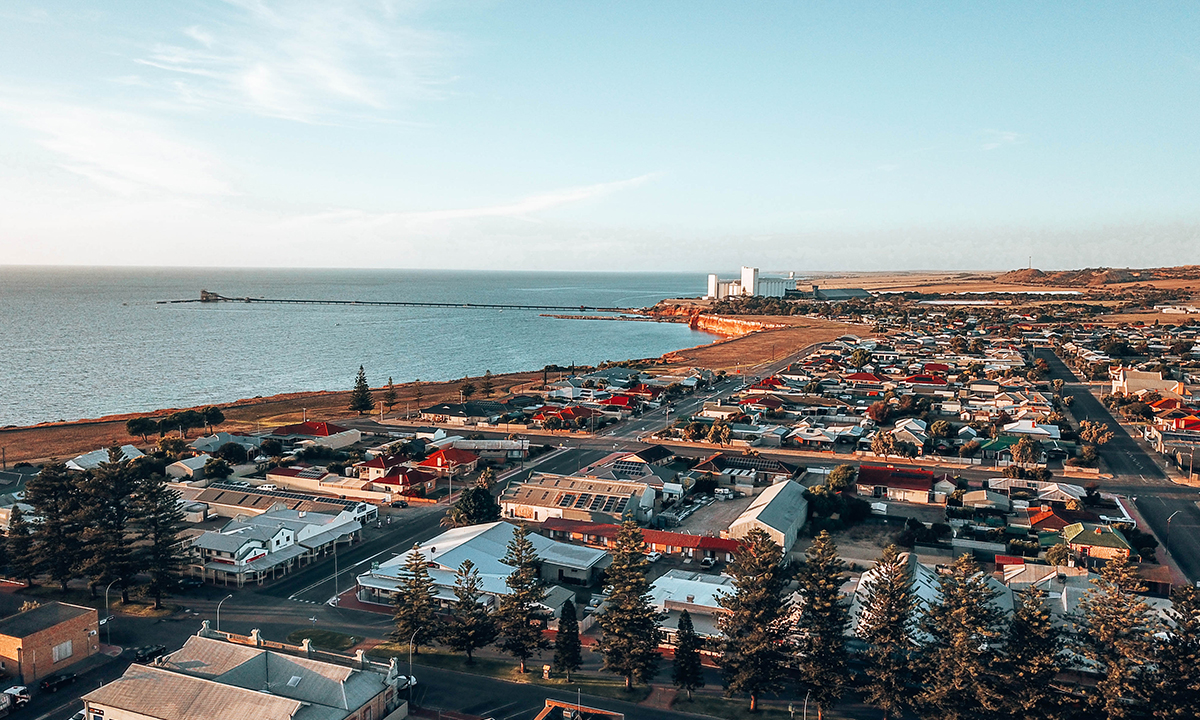
Ardrossan
Council Yorke Peninsula Council
Region Yorke and Mid North
Key Agricultural Industries Cereal crops, other broadacre crops and livestock, meat and wool
Population 1,167
Town overview
Best known for the development of the stump jump plough, today the town supports tourism and the surrounding agricultural properties. The deepwater shipping port is still an important economic driver.
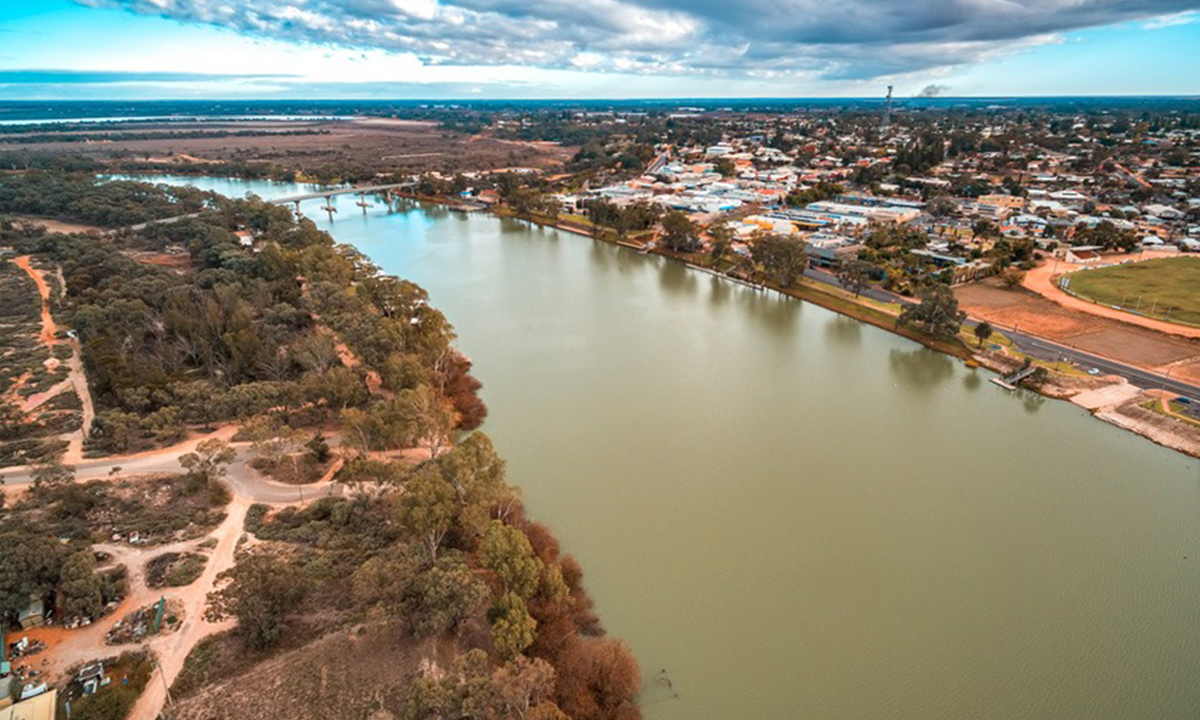
Berri
Council Berri Barmera Council
Region Murray and Mallee
Key Agricultural Industries Cereals, grains, livestock, horticulture, seeds, pastures, minor crops
Population 4,088
Town overview
Berri is well known for its success in horticulture, especially the growth of oranges and grapes – it is the home of a juice company, Berri Ltd. Berri is also surrounded by 3,000 hectares of irrigated fruit orchards and is known for fruit packing and wine.
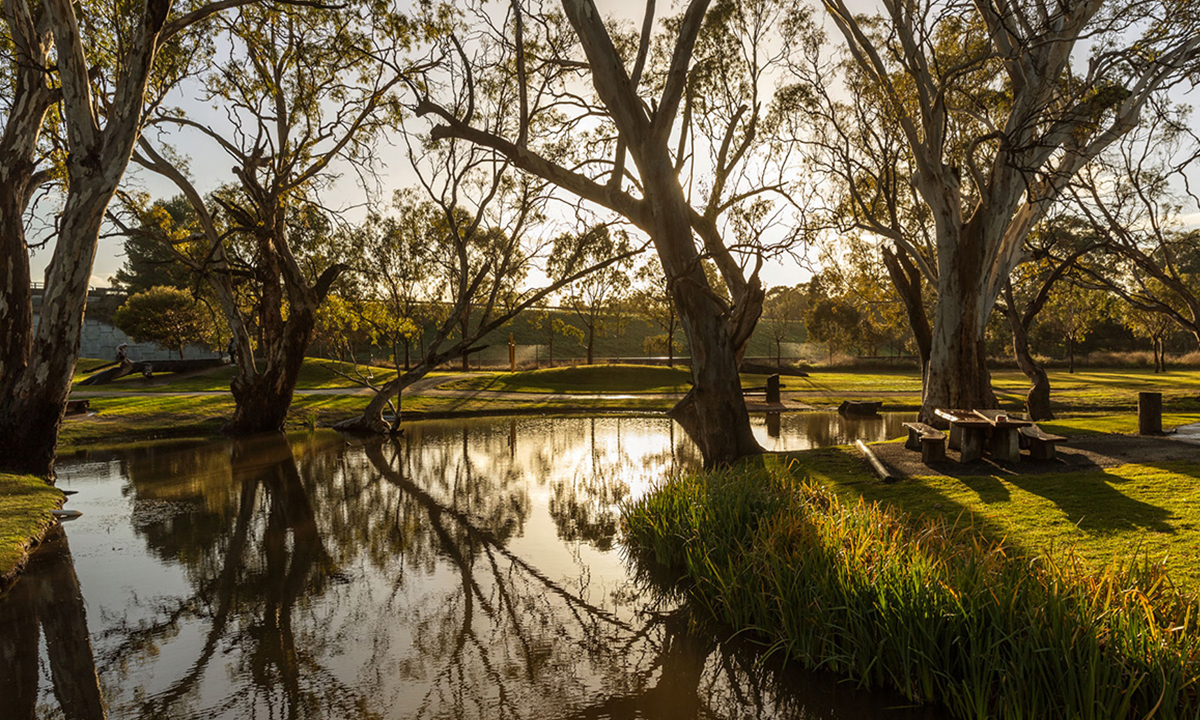
Bordertown
Council Tatiara District Council
Region Limestone Coast
Key Agricultural Industries Livestock, meat and wool, vegetables and crops for hay
Population 2,953
Town overview
The economic prosperity of the region surrounding Bordertown is closely tied to the agricultural sector and is well regarded for the quality and reliability of it’s productive capability. Primary production and associated food processing and value-add services are key economic drivers. The agricultural base is supported with it’s diversity, comprising viticulture, horticulture, irrigated small seed crops, mixed broadacre dry-land cropping, hay production and grazing.
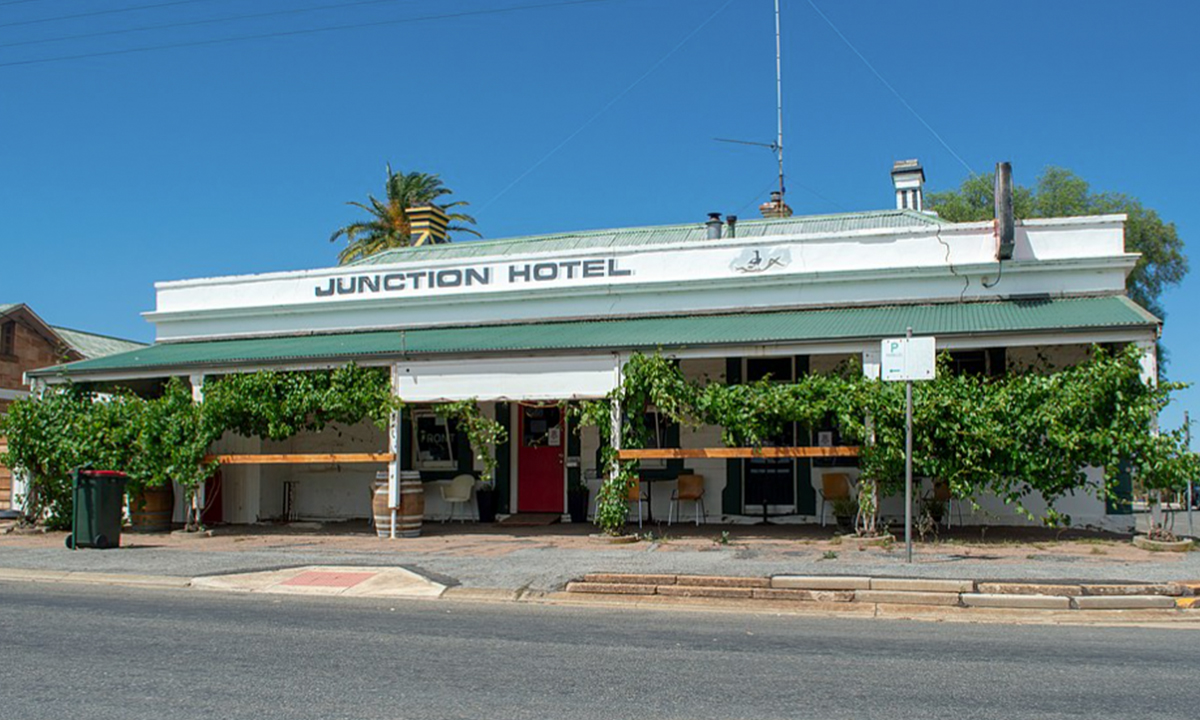
Brinkworth
Council Wakefield Regional Council
Region Yorke and Mid North
Key Agricultural Industries Cereal crops, other broadacre crops and livestock, meat and wool
Population 285
Town overview
Brinkworth is a small town with a great community atmosphere. A versatile farming town, Brinkworth prides themselves on their cropping techniques as well as their sustainability with a recycling plant featured in town.
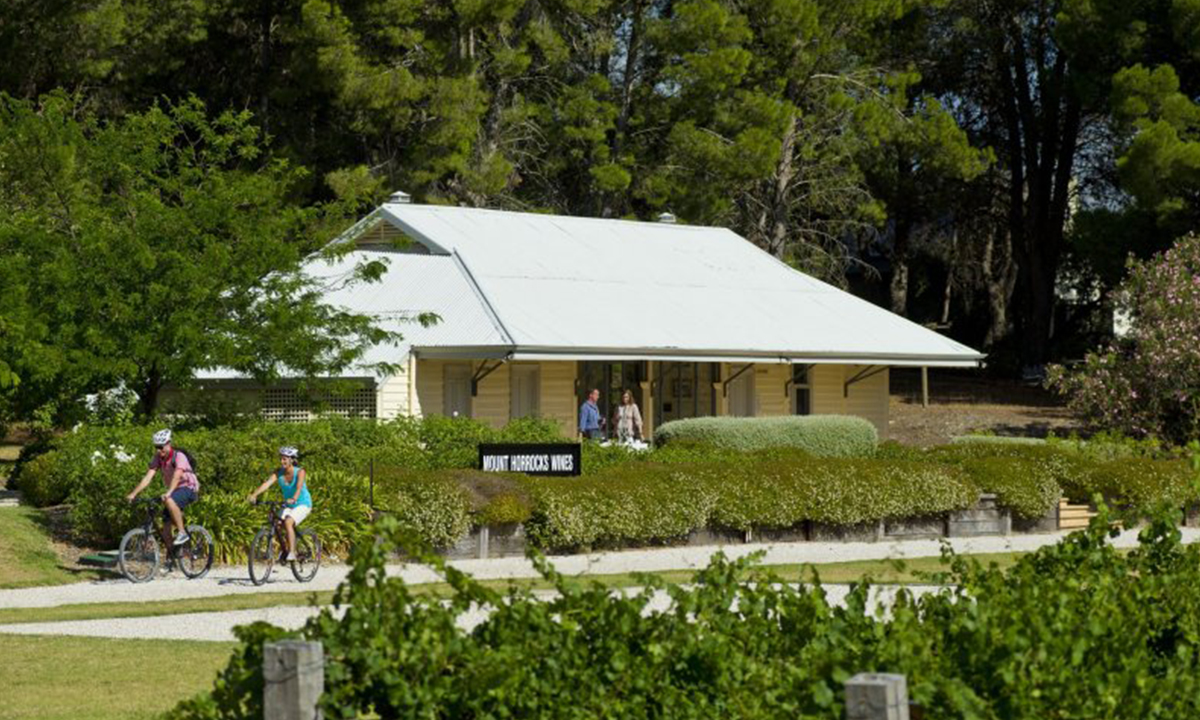
Clare
Council Clare and Gilbert Valleys Council
Region Yorke and Mid North
Key Agricultural Industries Grape and wine production, cropping and livestock
Population 3,160
Town overview
The major regional town of Clare supports the surrounding farmers and wine growers while providing townspeople and visitors with great produce and community support.
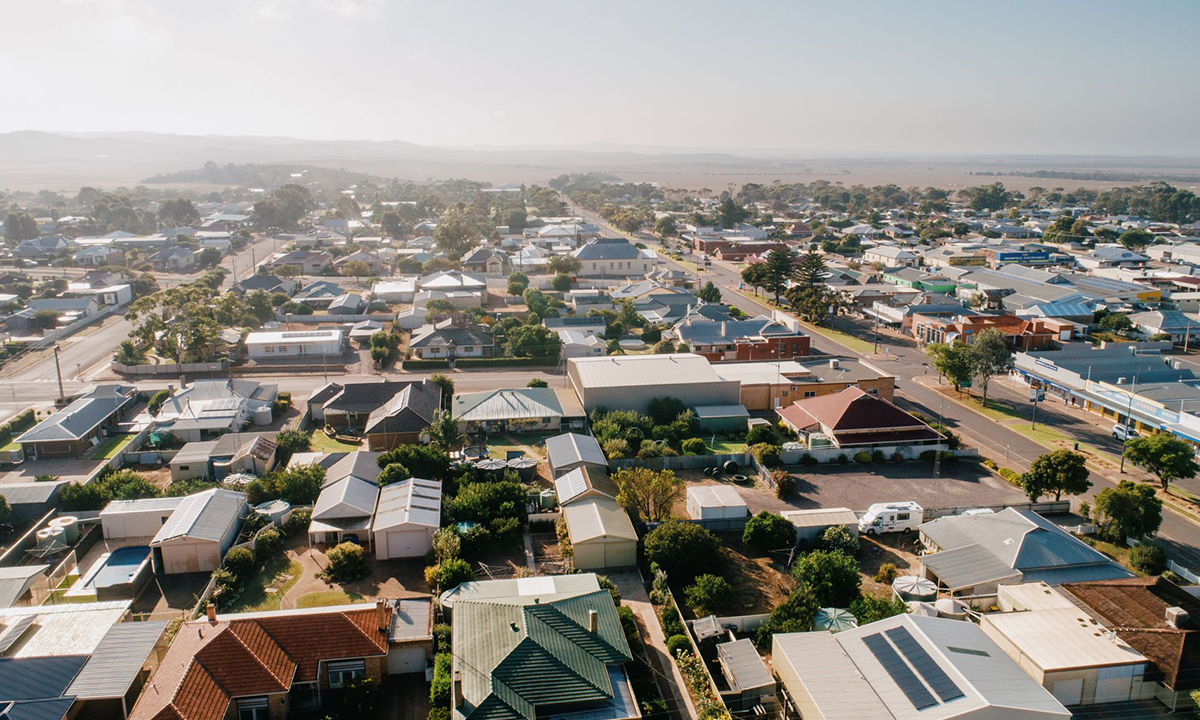
Cleve
Council District Council of Cleve
Region Eyre and Western
Key Agricultural Industries Cereal crops, livestock, meat and wool, and other broadacre crops
Population 1,771
Town overview
Cleve is a small wheatbelt town in the heart of the Eyre Peninsula. The Cleve council has employed a person to manage Drought Relief for farmers in the region. Additionally, the council has contributed to Cleve’s new multi-function Sports Centre, where business has been booming since opening, as well as expanding the water catchment which helps sporting clubs to irrigate with runoff water.
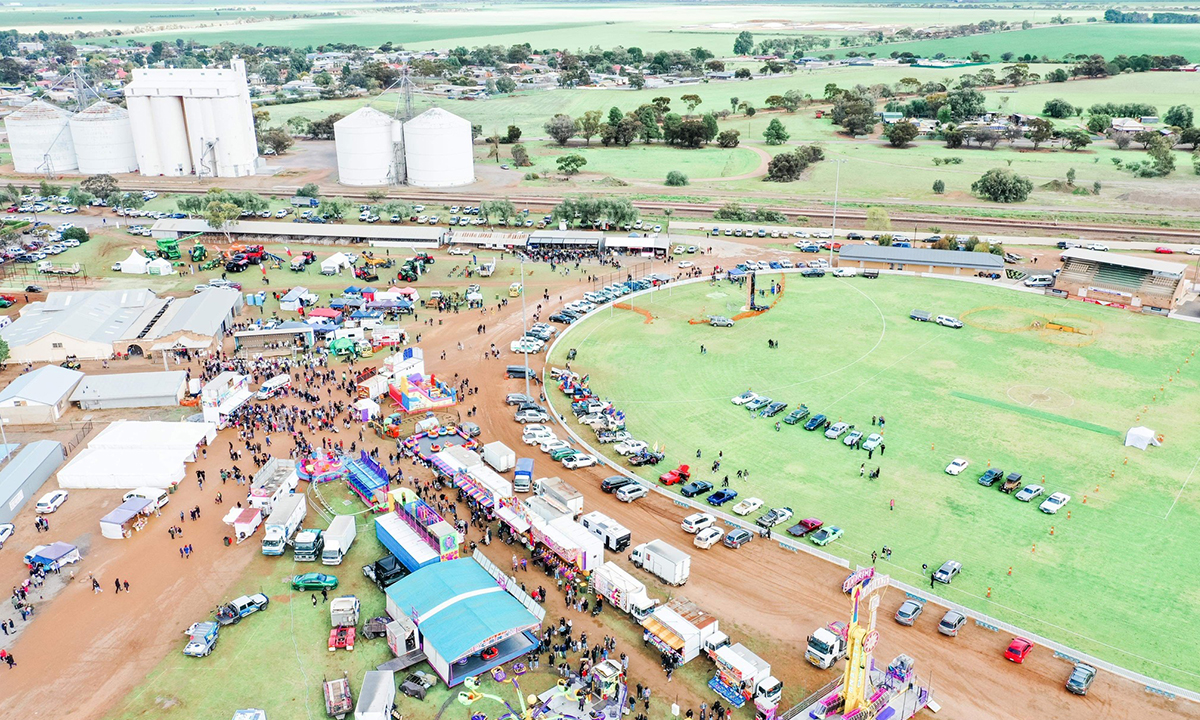
Crystal Brook
Council Port Pirie Regional Council
Region Yorke and Mid North
Key Agricultural Industries Cereal crops, livestock, meat and wool, and other broadacre crops
Population 1,515
Town overview
Crystal Brook has been the Southern Flinders Ranges agricultural hub for generations. The town fosters a culture of productivity, with successful agriculture and related business startups flourishing. These include Perry’s Fuel, Kerin’s Chemical Agencies, Wardle Co, and Rocky River Ag. These businesses, with offices throughout the Mid North have helped to drive regional development, bringing jobs to the area while still remaining locally owned. Crystal Brook is proudly home town to the former SA Premier Rob Kerin (also former Chair of Primary Producers), supporting South Australia’s agricultural industry.
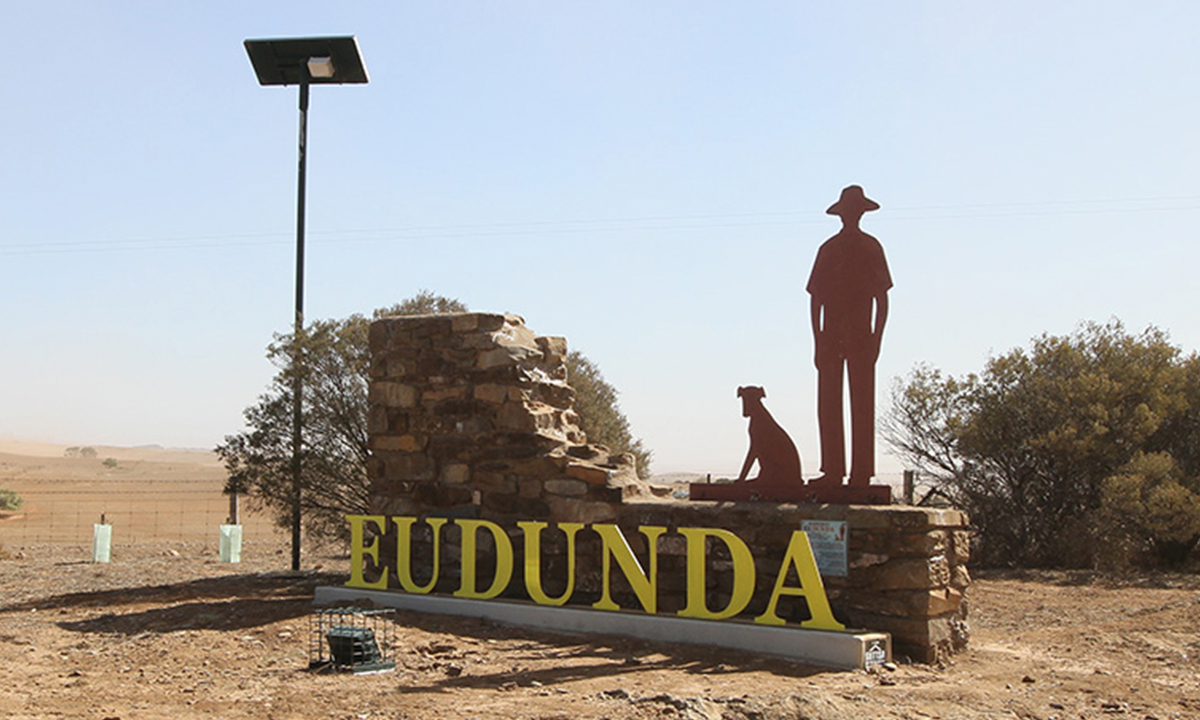
Eudunda
Council Goyder Regional Council
Region Barossa, Light and Lower North
Key Agricultural Industries Cereal crops, other broadacre crops and livestock, meat and wool
Population 570
Town overview
Eudunda, known locally as the “Valley of Hidden Treasures”, is a quiet town with simple charm and historic appeal. It is distinguished by an attractive main street with interesting historic buildings and vine-covered verandas. Supporting a variety of primary industries such as sheep, cattle, grain, pork and chickens the town is a hub for agricultural industries and has several industries such as Reinman, Shultz, and Demot.
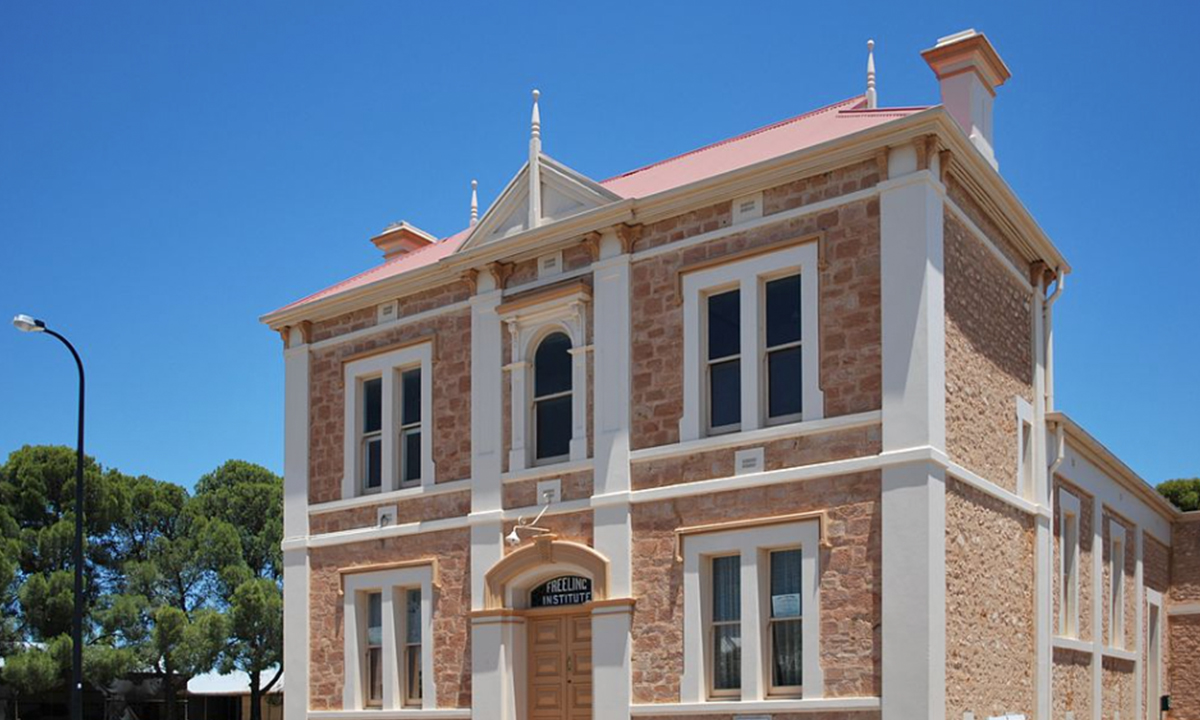
Freeling
Region Barossa, Light and Lower North
Key Agricultural Industries Cereal crops, other broadacre crops
Population 2,214
Town overview
The town of Freeling has a rich and plentiful history being a major wheat growing district from the early 1900’s to now but also enjoys the status of the largest supplier of precision ground engagement tools produced in Australia within the engineering industry. It is also the home of many filming locations for popular television series, McLeod’s Daughters.
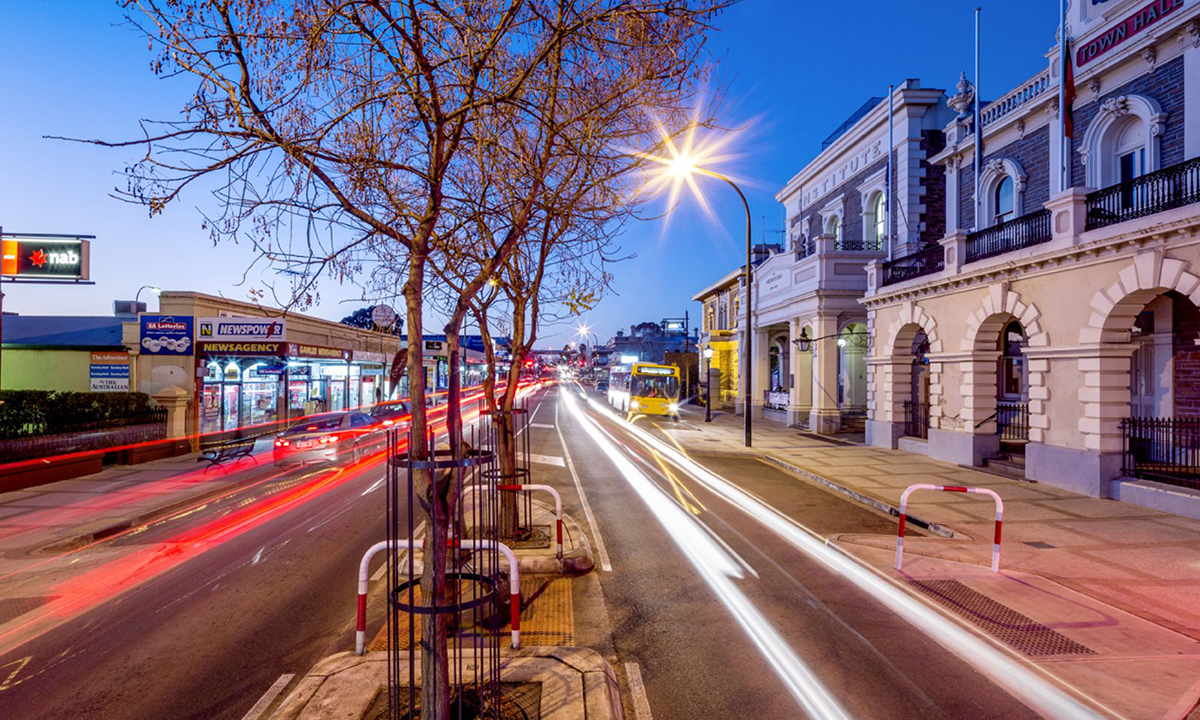
Gawler
Council Gawler Council
Region Barossa, Light and Lower North
Key Agricultural Industries Food, wine & agribusiness
Population 24,988
Town overview
Gawler is the oldest country town on the Australian mainland in the state of South Australia. Historically a semi-rural area, Gawler has been swept up in Adelaide’s growth in recent years, and is now considered by some as an outer northern suburb of Adelaide. It is counted as a suburb in the Outer Metro region of the Greater Adelaide Planning Region.
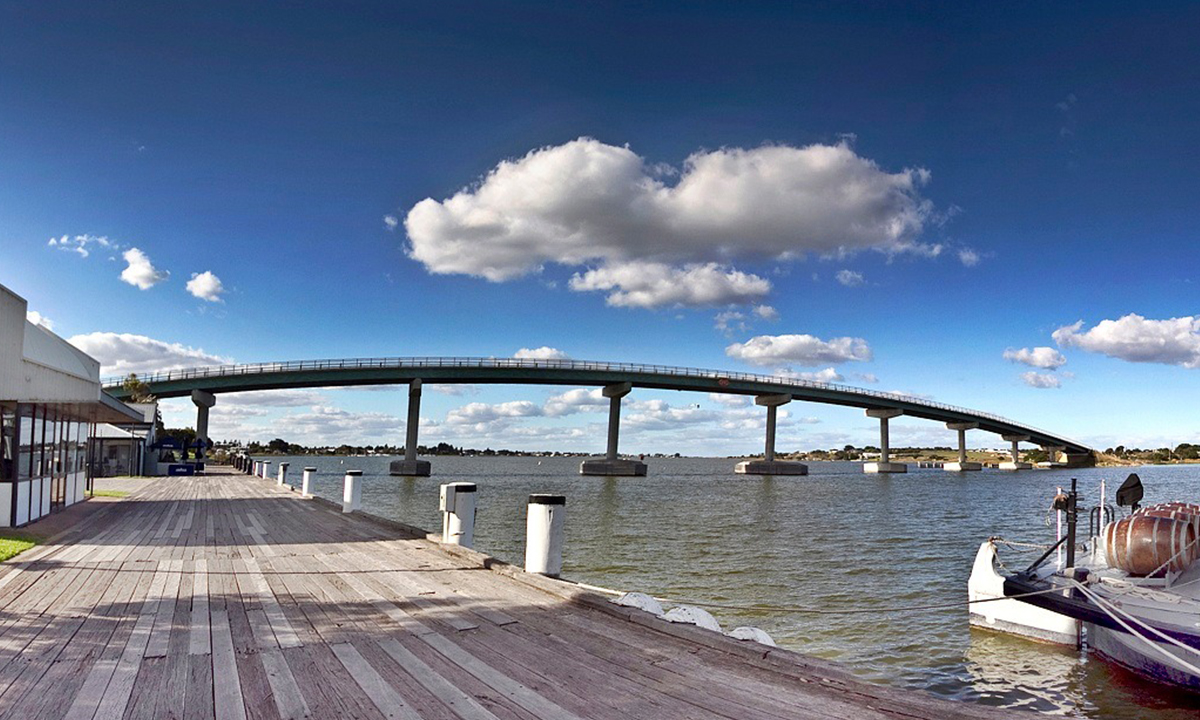
Goolwa
Council Alexandrina Council
Region Fleurieu and Kangaroo Island
Key Agricultural Industries Wheat, barley, crop, livestock
Population 7,581
Town overview
Goolwa is a historic river port on the Murray River near the Murray Mouth in South Australia, and joined by a bridge to Hindmarsh Island. The name “Goolwa” means “elbow” in Ngarrindjeri, the local Aboriginal language, and the area was known as “The Elbow” to the early settlers.
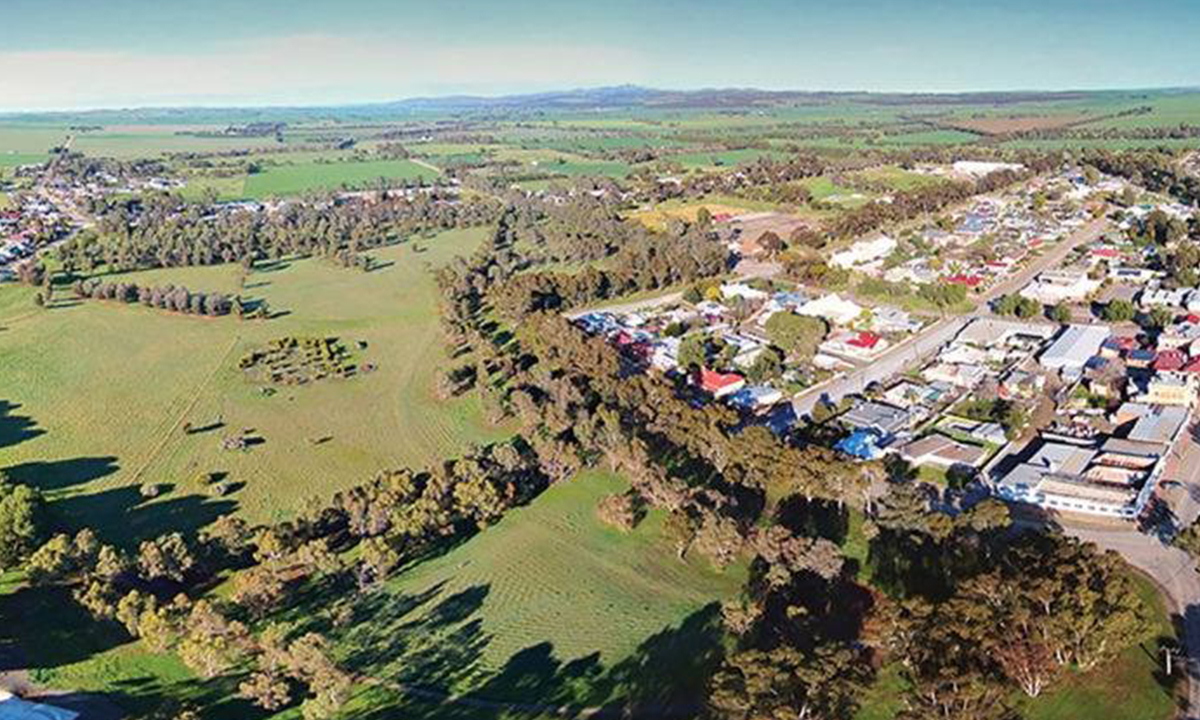
Jamestown
Council Northern Areas Council
Region Yorke and Mid North
Key Agricultural Industries Cereal crops, livestock, meat and wool and other broadacre crops
Population 1,392
Town overview
With a rich history, Jamestown’s agricultural and farming sector supports the local community and economy predominately through cereal crops and livestock. Jamestown is known for the most volunteers in South Australia and attracts many visitors with events such as the Air Spectacular and Easter Tennis Tournament.
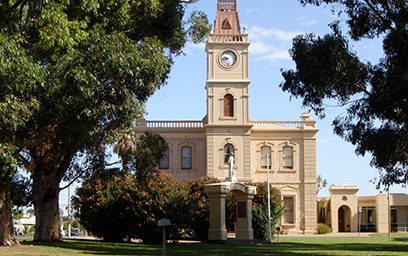
Kadina
Council Copper Coast Council
Region Yorke and Mid North
Key Agricultural Industries Cereal crops, other broadacre crops, livestock, meat and wool
Population 5,414
Town overview
With a broad range of primary industries, Kadina’s deep sea wharf, cereal crops and meat processing operations are its hallmark. The town’s social infrastructure works to provide essential workplace insfrastructure, creating a holistic and cohesive community on the Yorke Peninsula.
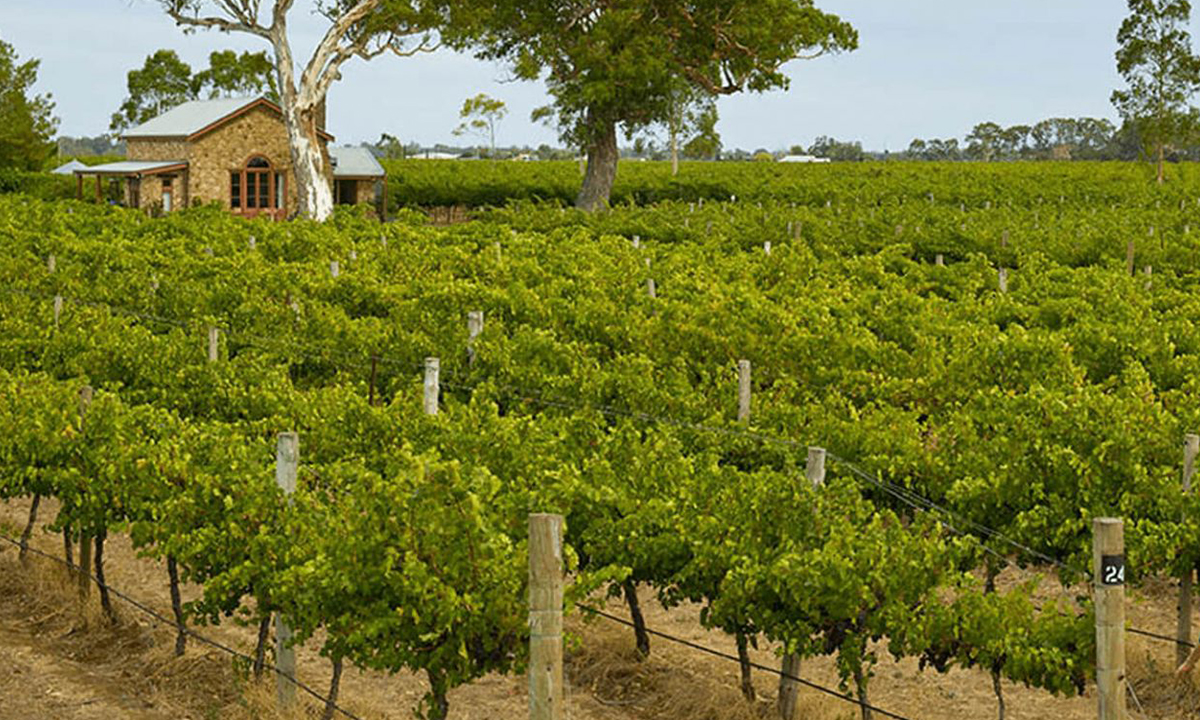
Kalangadoo
Council Wattle Range Council
Region Limestone Coast
Key Agricultural Industries Wheat, barley, canola, cotton, sugarcane, fruits, vegetables
Population 457
Town overview
A very active community supporting farming and local businesses. The community (through The Community Development Association) has funded street upgrades, sporting club upgrades and new toilets and showers for an RV free camp. The town is largely agricultural, and supporting businesses, with many farmers also volunteering for community projects and cfs, such as our historic society (including heritage farming equipment) and many are supporting grower groups and trials.
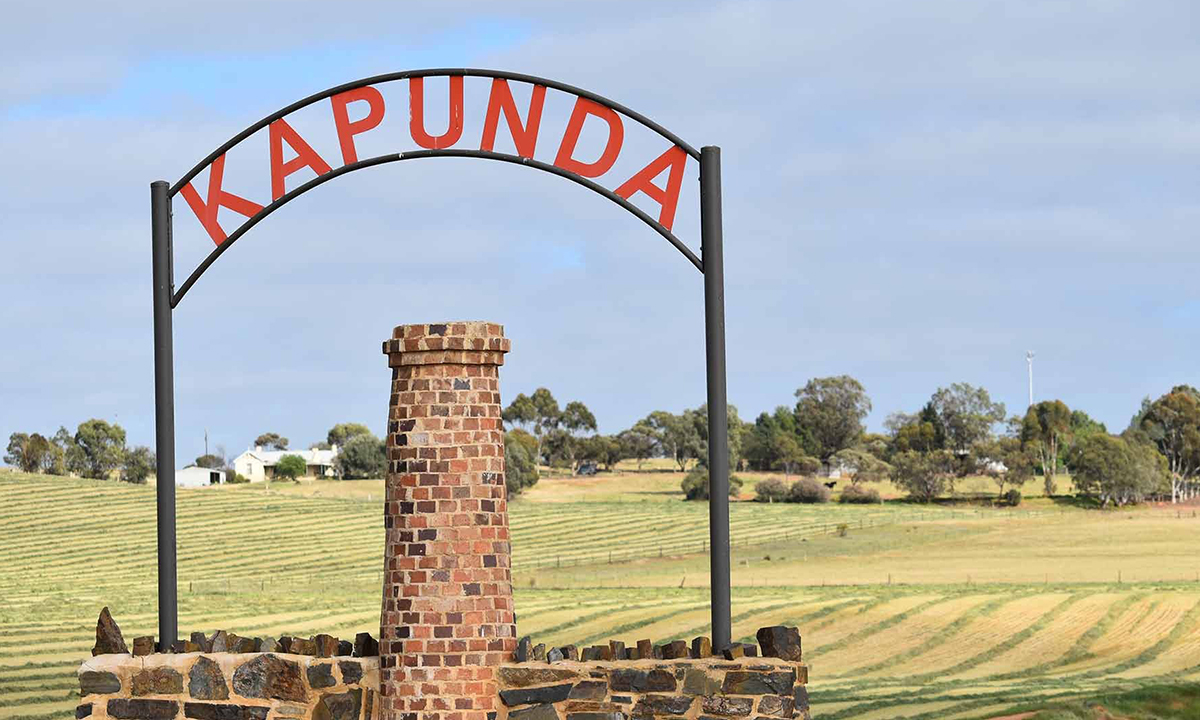
Kapunda
Council Light Regional Council
Region Barossa, Light and Lower North
Key Agricultural Industries Livestock, meat and wool, cereal crops and grapes (wine and table)
Population 2,917
Town overview
Kapunda is a producer of cereal crops, mainly wheat, barley and oats. Value-added services carried out by local industry include stock feed milling and hay processing. Kapunda is a contributor to the wine-growing industry centred in the nearby Barossa Valley.The town Kapunda proudly avoided a substantial rate increase for their farming community during the primary production properties land revaluation within the Council. This initiative demonstrates Kapunda’s dedication to supporting its local community members.
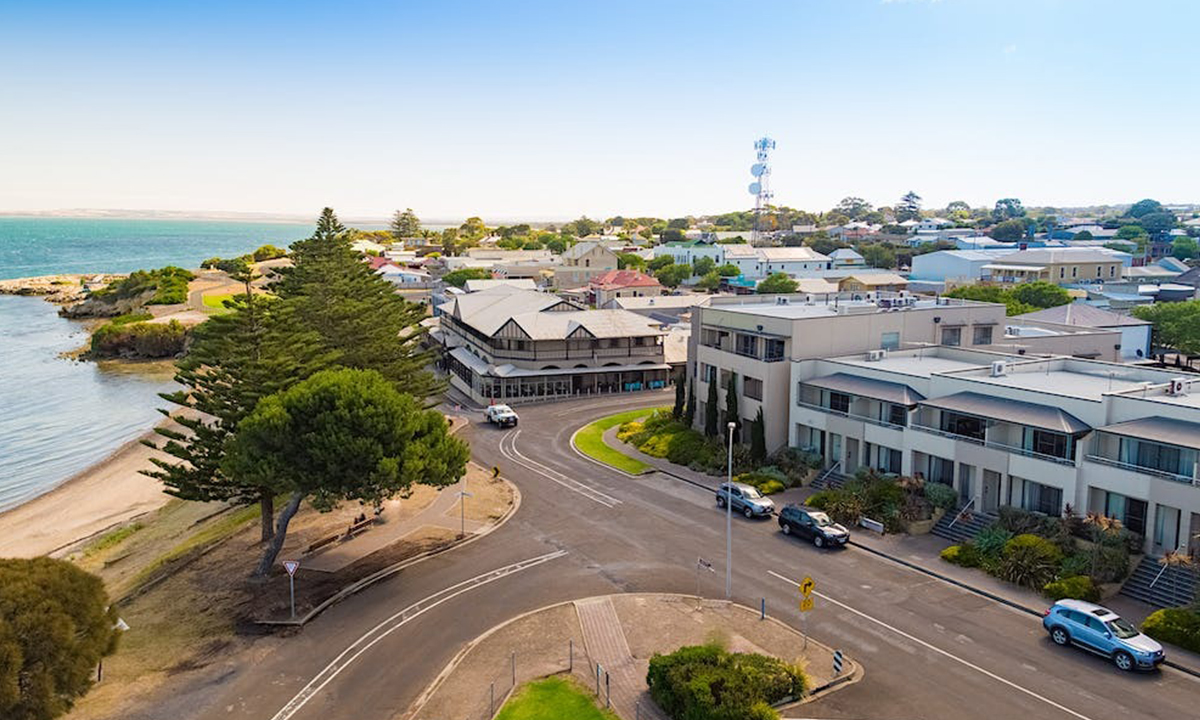
Kingscote
Council Kangaroo Island Council
Region Fleurieu and Kangaroo Island
Key Agricultural Industries Crops, livestock, meat and wool
Population 1,826
Town overview
Kingscote is Kangaroo Island’s commercial and business hub. Situated on the northeast corner of the island on the coast of Nepean Bay, it is a well-established tourist centre.

Kingston South East
Council Kingston District Council
Region Limestone Coast
Key Agricultural Industries Livestock, meat and wool, other broadacre crops, cereal crops
Population 1,648
Town overview
This quaint little town was once a small village on the coast of Lacepede Bay in South Australia. Today, Kingston SE is a regional centre for various agricultural productions, cattle production, horticulture, viticulture and aquaculture.The Big Lobster sculpture at the entrance of the town is the most popular landmark in Kingston SE. Kingston SE also offers a number of beautiful conservation parks such as the Jip Jip conservation park and Butchers Gap.
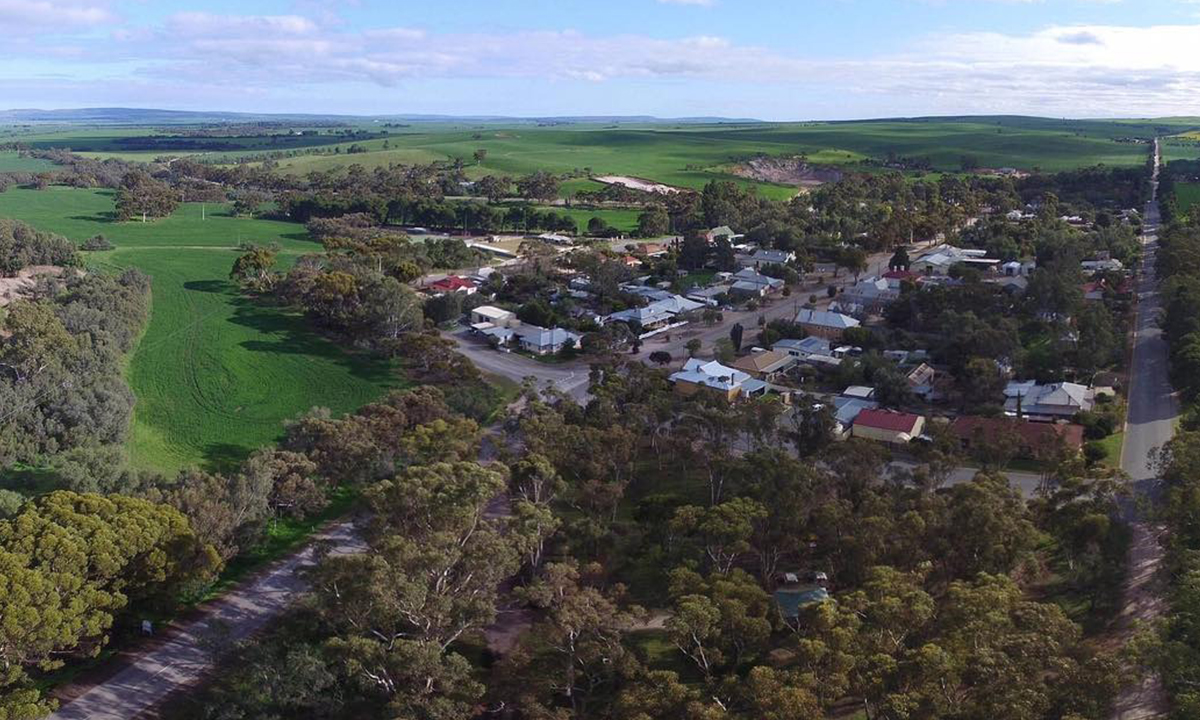
Koolunga
Council Port Pirie Regional Council
Region Yorke and Mid North
Key Agricultural Industries Livestock, meat and wool and crops
Population 231
Town overview
Koolunga township was established in the 1880s beside the Broughton River near the ford known as “Hope’s Crossing”. The main economic activities of the town and surrounding area are cereal and canola cropping, with sheep husbandry to a lesser extent.
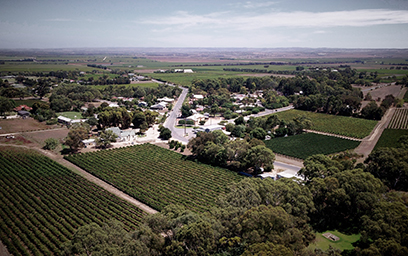
Langhorne Creek
Council Alexandrina Council
Region Fleurieu and Kangaroo Island
Key Agricultural Industries Grapes (wine and table), livestock, meat and wool and vegetables
Population 427
Town overview
Langhorne Creek champions sustainable wine growing practices through their Sustainable Winegrowing Australia Program. Wine production and viticulture in the region has created opportunities for both investment and development, with more than $4 million in tourism infrastructure built in the past two years. Langhorne Creek’s world-first marketing program, Project 5255, has produced three marketplace labelled wines. The town has served a vital role in increasing domestic tourism and expenditure as one of Australia’s oldest wine regions.
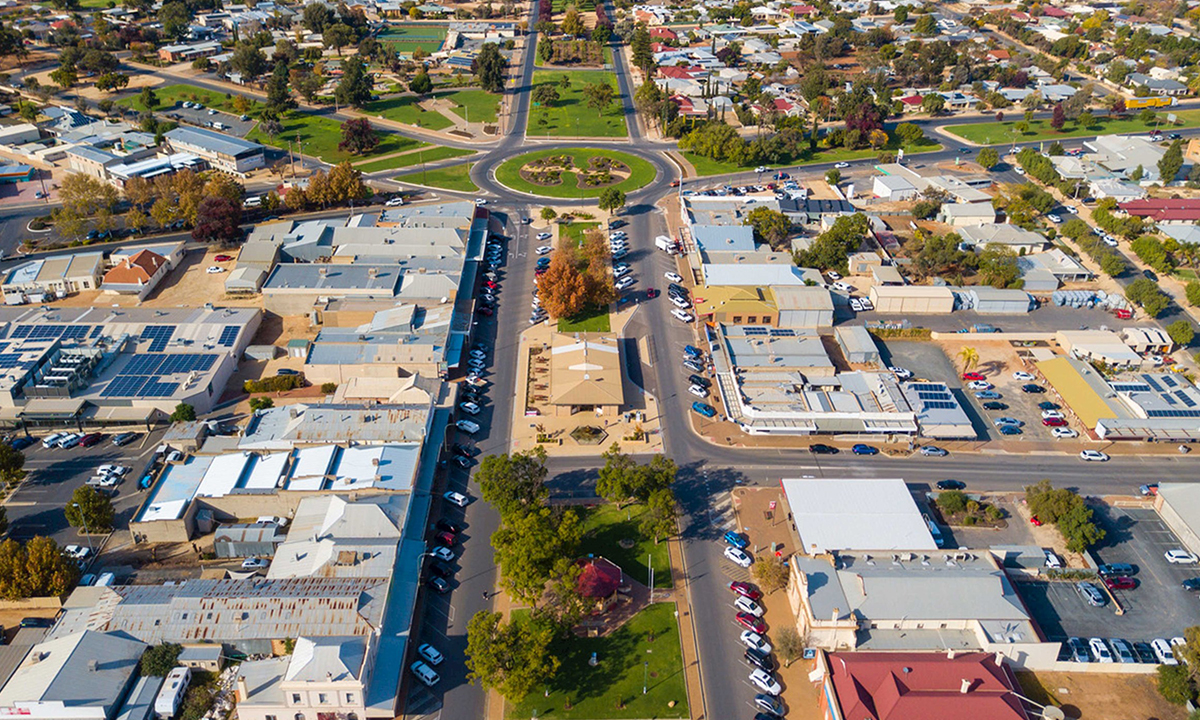
Loxton
Council District Council of Loxton Waikerie
Region Murray and Mallee
Key Agricultural Industries Citrus fruit, grapes (wine and table) and crops for hay
Population 4,568
Town overview
Community based and locally driven, Loxton’s main productions are almonds and citrus. The small River Murray town is proud of its reputable school and sports teams, fostered by their strong sense of community. Additionally, the town boasts a pioneer settlement museum — the Loxton Historical VIllage — and hosts the annual “Loxton Lights Up” Christmas festival.
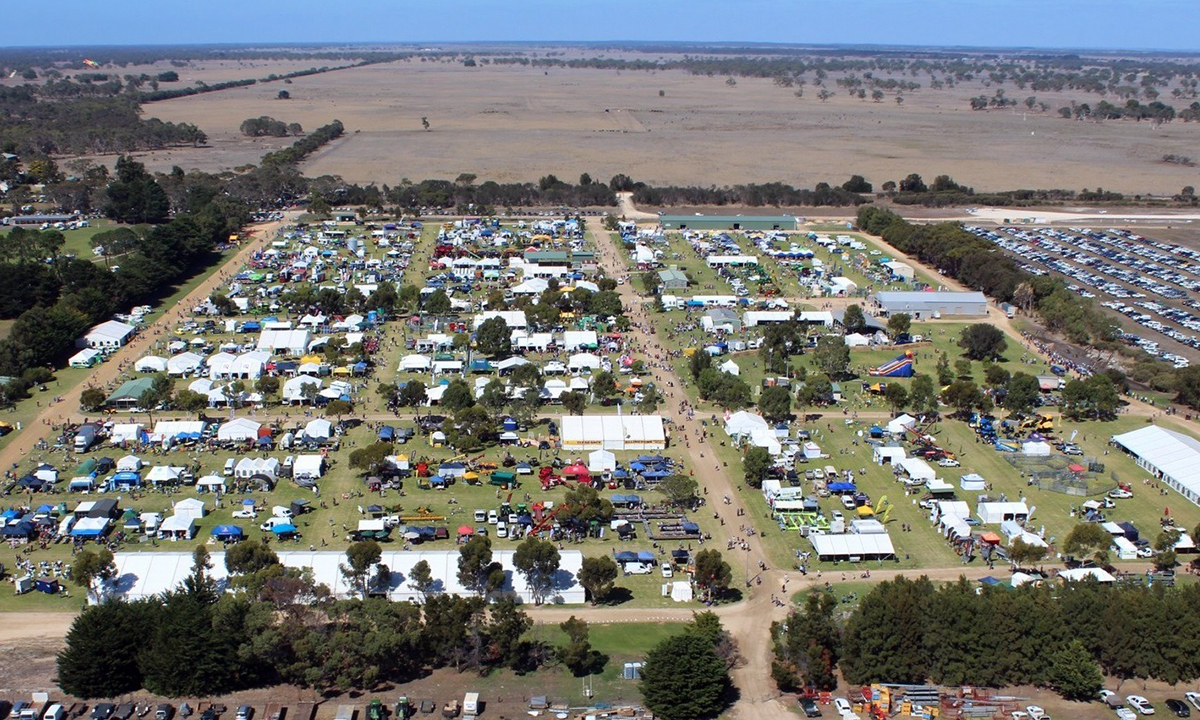
Lucindale
Council Naracoorte Lucindale Council
Region Limestone Coast
Key Agricultural Industries Livestock, meat and wool, cereal crops and grapes (wine and table), crops for hay
Population 230
Town overview
Lucindale is central to some of Australia’s best wine producing areas with all of the Wrattonbully and both Padthaway and Coonawarra wine regions within the district. Has a diverse range of farming practices, with several seed processors, distributors and horticultural production.
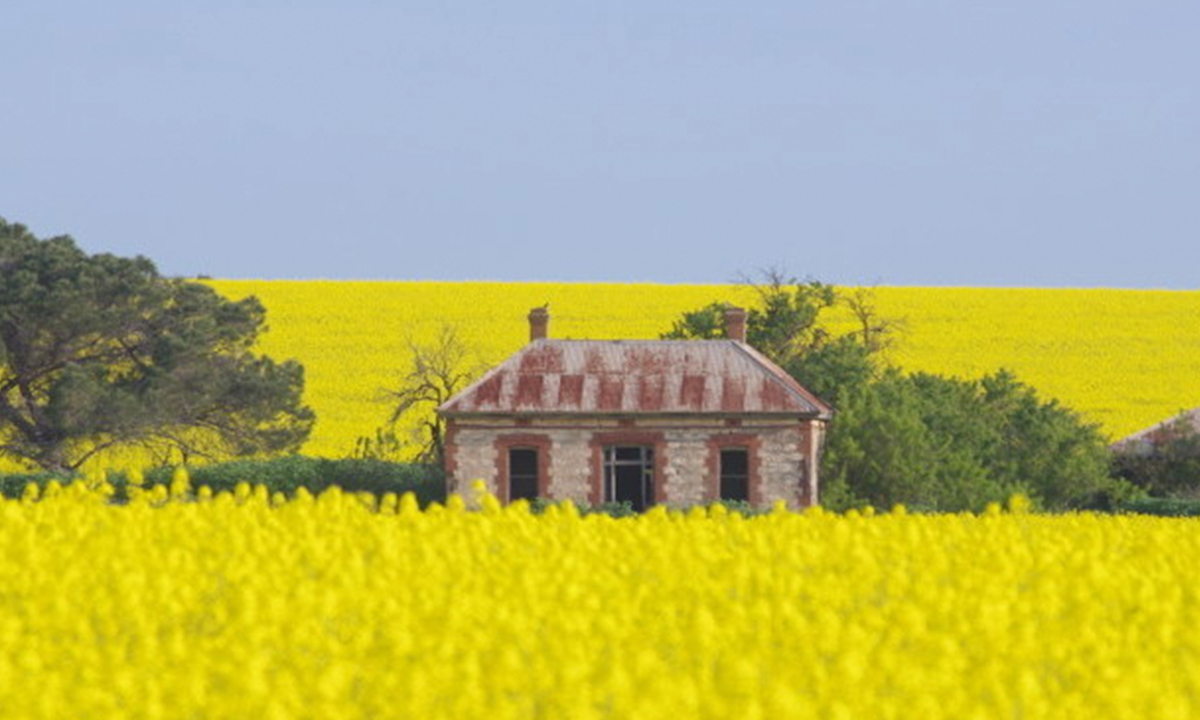
Maitland
Council Yorke Peninsula Council
Region Yorke and Mid North
Key Agricultural Industries Cereal crops, livestock, meat and wool and other broadacre crops
Population 1,029
Town overview
Located at the centre of Yorke Peninsula, Maitland is the main service and shopping town for this productive agricultural area. The town is in the centre of rich farming land. The limestone soils are ideal for the growing of barley and wheat and the area enjoys rainfall which is significantly better than the rest of the Yorke Peninsula.

Mannum
Council Mid Murray Council
Region Murray and Mallee
Key Agricultural Industries Livestock, meat and wool, cereal crops and vegetables
Population 2,398
Town overview
Located in the Riverland, Mannum is an agricultural hub with a strong community. A centre for agricultural research and innovation – South Australian Research and Development Institute (SARDI) and the University of Adelaide have conducted research, helping to introduce new technologies, practices, and improved varieties, leading to increased productivity and sustainability. Mannum has attracted investment and encouraged the development of agri-tourism ventures, such as farm stays, vineyard tours, and farm-to-table experiences.
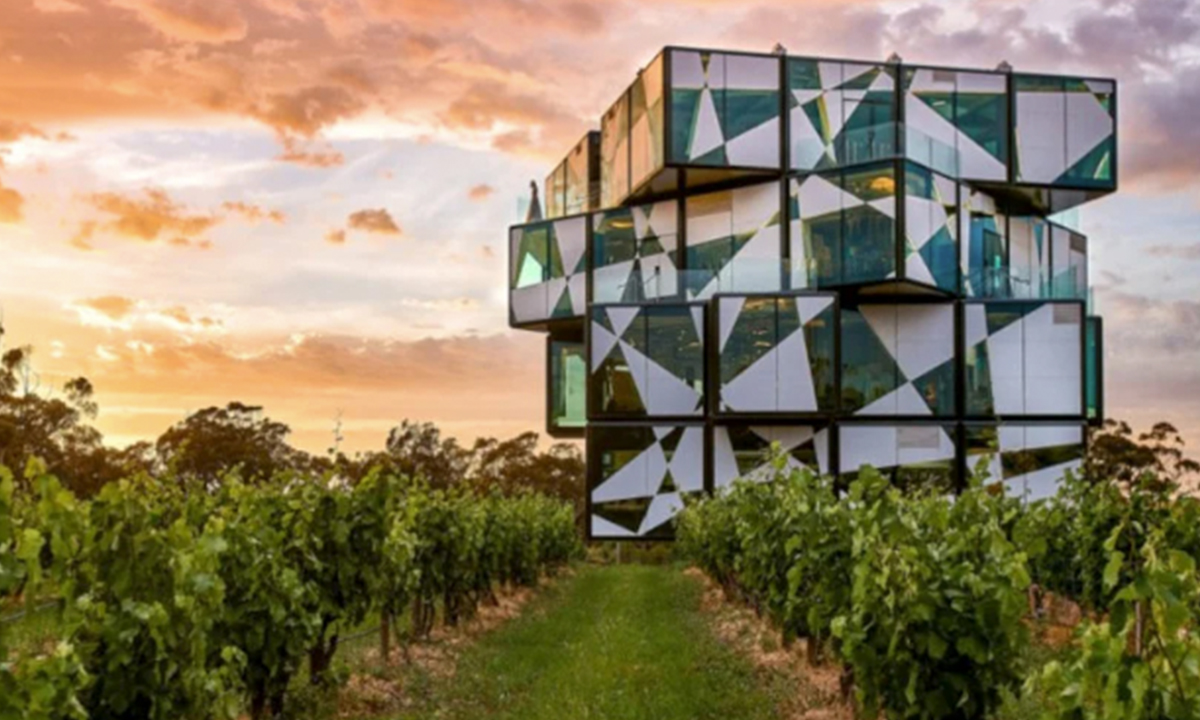
McLaren Vale
Region Fleurieu and Kangaroo Island
Key Agricultural Industries Grapes (wine and table)
Population 4,384
Town overview
The McLaren Vale wine region is recognised as one of the premier wine producing regions in Australia and has strong brand recognition internationally. The area’s clean and green credentials are recognised around the world and it has received international acclaim for its vine and wine sustainability practices. McLaren Vale demonstrates agricultural best practice and is constantly striving to improve these already high standards. In conjunction with the wine industry, Biodiversity McLaren Vale actively seeks to enhance, protect and reinvigorate the area’s spectacular biodiversity.
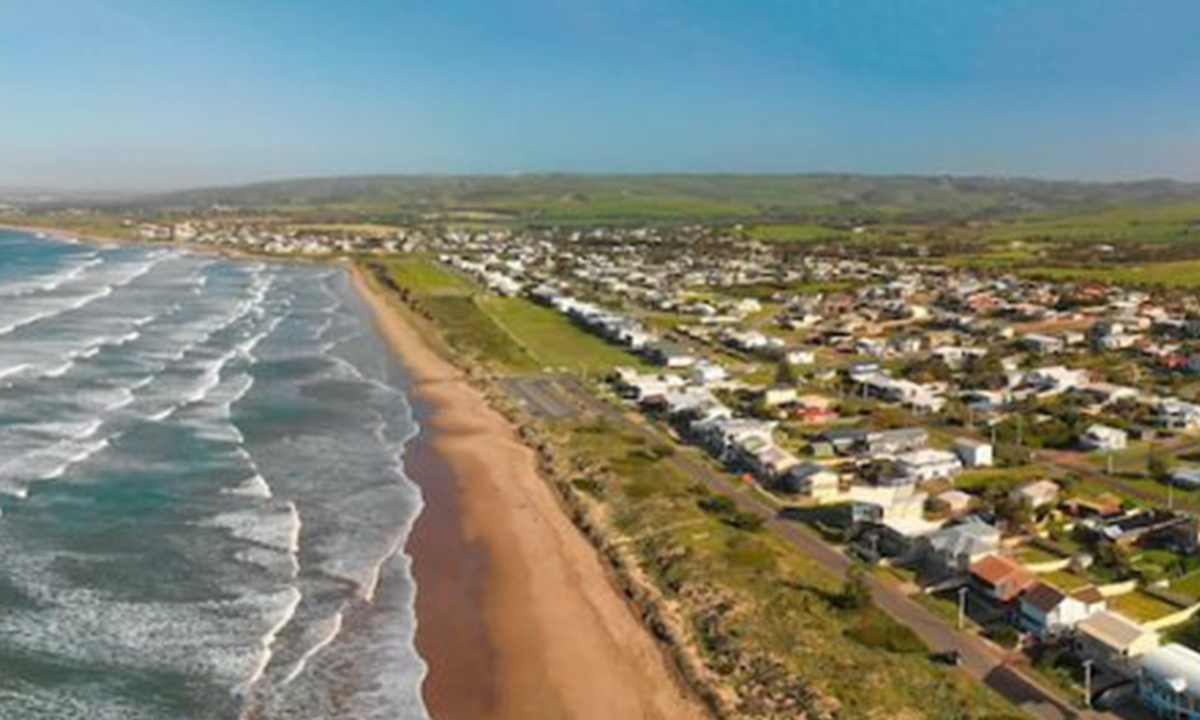
Middleton
Council Alexandrina Council
Region Fleurieu and Kangaroo Island
Key Agricultural Industries Livestock, meat and wool, cereal crops and seafood
Population 12,496
Town overview
Middleton is a town in South Australia on the eastern end of the south coast of the Fleurieu Peninsula. It lies between the towns of Port Elliot and Goolwa. Middleton is a holiday and tourist destination with a popular surf beach. Some southern right whales calve and mate in the waters off Middleton’s beaches and can be viewed from Middleton Point or Bashams Beach during the whale watching season (June or July to October). Australian sea lions can be seen resting on beaches.
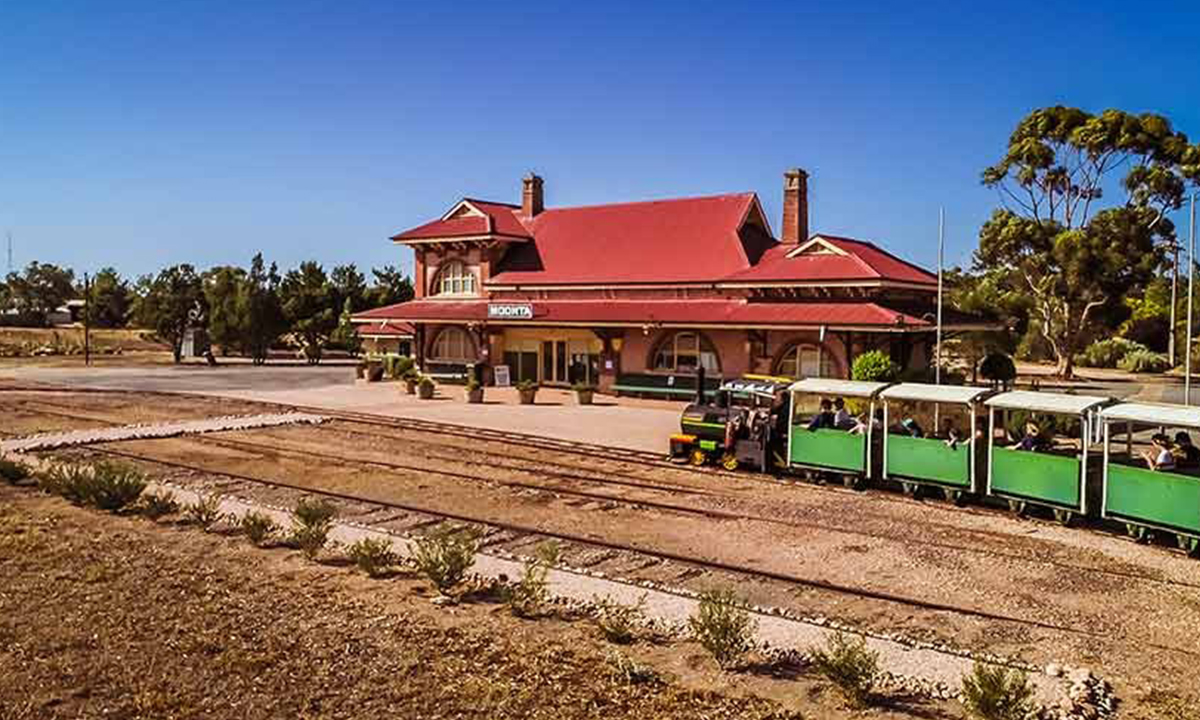
Moonta
Council Copper Coast Council
Region Yorke and Mid North
Key Agricultural Industries Livestock, meat and wool, cereal crops, dairy
Population 852
Town overview
Moonta is one of three towns known as the Copper Coast or “Little Cornwall” for their shared copper mining history. Following the demise of copper mining, the district successfully merged into dry land farming. Moonta’s surrounds are used for growing barley, wheat and other crops such as legumes, canola, chickpeas and field peas. Moonta is well known today as a tourist destination, for the fascinating heritage and its beach and fishing scene.
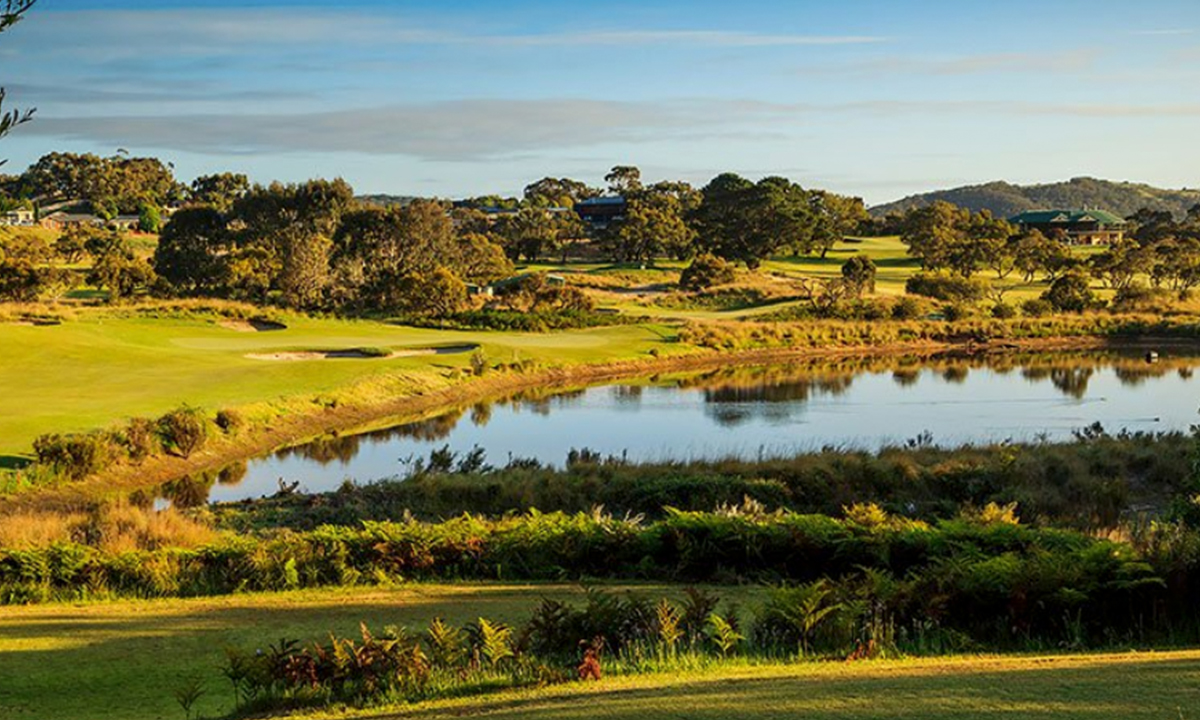
Mount Compass
Council Alexandrina Council
Region Fleurieu and Kangaroo Island
Key Agricultural Industries Livestock, meat and wool, cereal crops, other broadacre crops
Population 1,457
Town overview
Mount Compass is an authentic rural hub surrounded by rolling hills, meandering country roads and agricultural farm land. The region comprises of agriculture and horticulture enterprises in the district include dairy-farming, berry-growing, aquaculture, deer-farming, flower-growing, vegetable production, animal production and viticulture. Dedicated & innovative farmers provide research & development opportunities for lucrative market gardens providing healthy and nourishing food. The region utilises new digital technology, rotational crops and soil integrity and regularly participates in new on-farm trials to assist with crop and horticulture production.
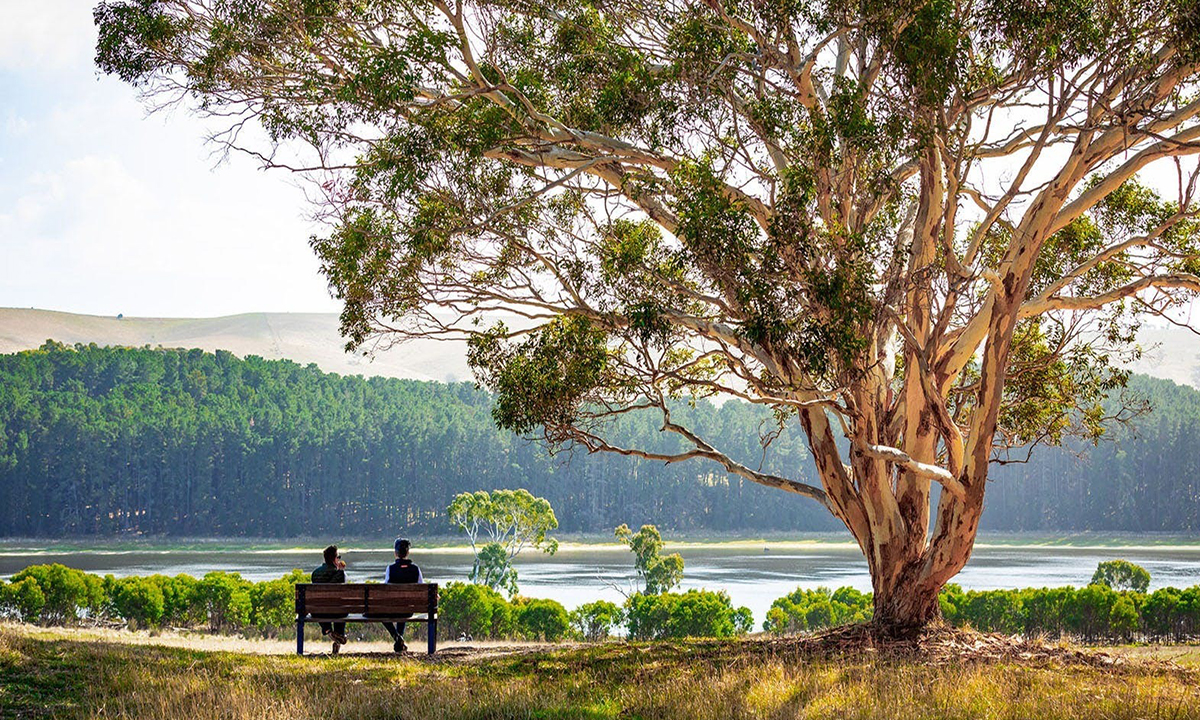
Myponga
Council District Council of Yankalilla
Region Fleurieu and Kangaroo Island
Key Agricultural Industries Livestock, meat and wool, dairy, crops
Population 393
Town overview
Myponga is prime dairying real estate, thanks to the Mediterranean climate and the cluster of dairies and production facilities. The region boasts its benefits, usually associated with areas off the beaten path – clean air, a tight knit community and minimal noise pollution.
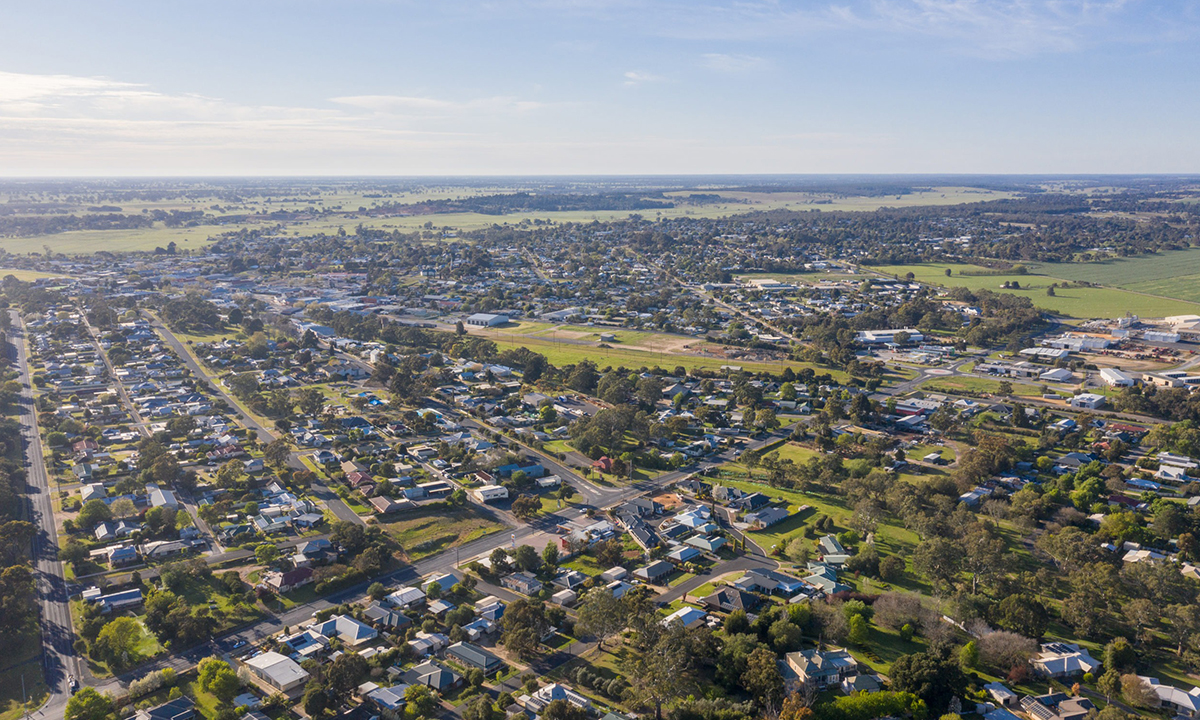
Naracoorte
Council Naracoorte Lucindale Council
Region Limestone Coast
Key Agricultural Industries Livestock, meat and wool, grapes (wine and table) and crops for hay
Population 5,960
Town overview
Naracoorte continues to thrive at the heart of the agriculturally-rich Limestone Coast with significant development and growth in its agricultural service industry. Multi-million dollar advancements by agricultural-based businesses are impressive sights at entrances to the town.
The world-leading specialist seed processing hub of South Pacific Seeds, the vastly expanded grain handling and storage processes of TE Storage & Logistics catering for the high-end market, and the expansion of the Qube Logistics truck terminal to support the growth of meat processing facility Teys Australia (which has had substantial extensions in recent times), are all having a significant impact on primary industries investments in our area and beyond.
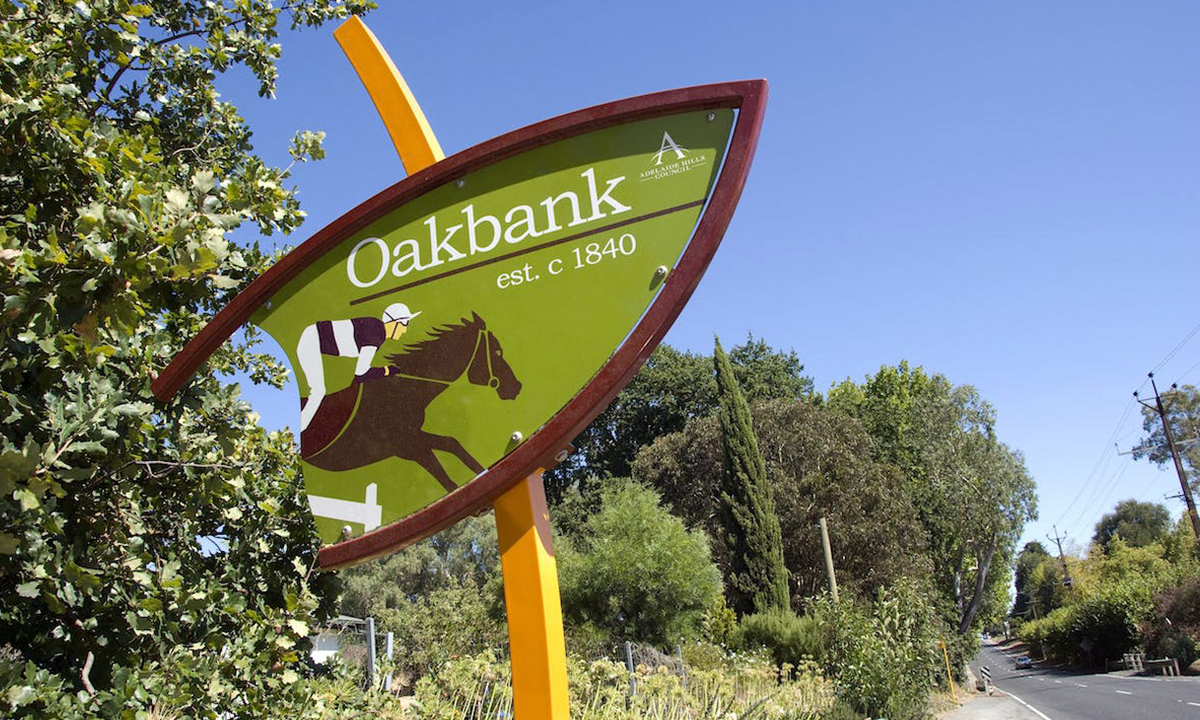
Oakbank
Council Adelaide Hills Council
Region Adelaide Hills
Key Agricultural Industries
Population 473
Town overview
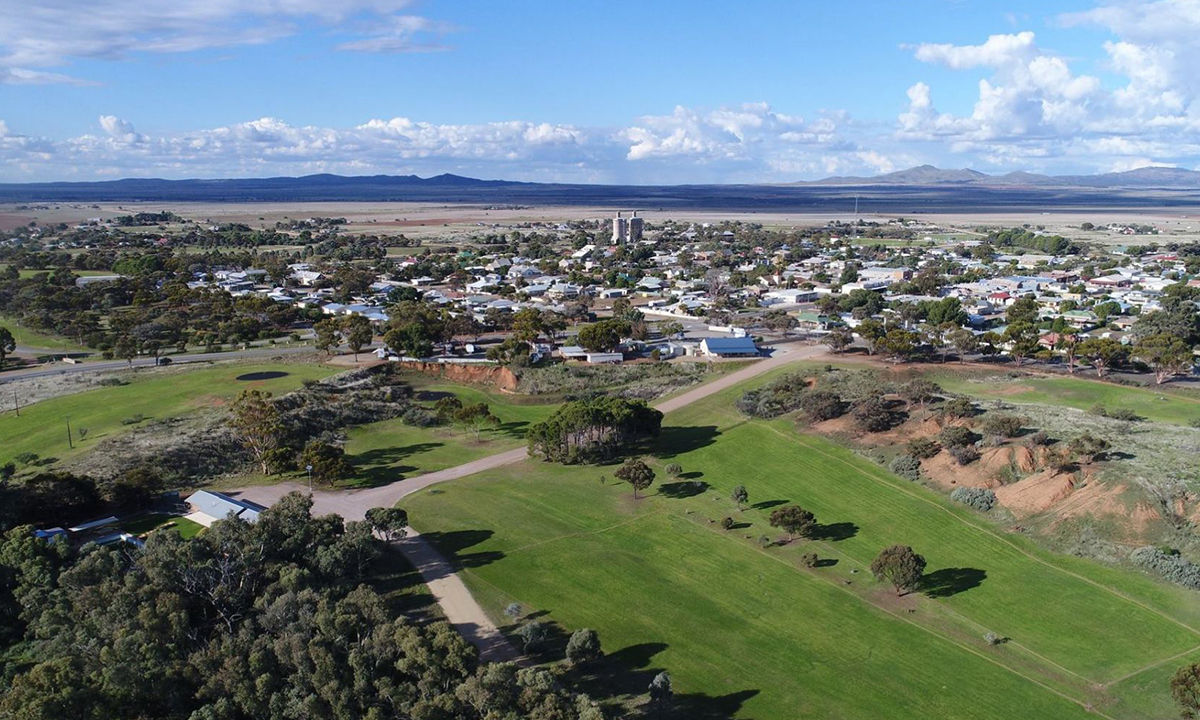
Orroroo
Council District Council of Orroroo Carrieton
Region Yorke and Mid North
Key Agricultural Industries Cereal crops, livestock, meat and wool, and other broadacre crops
Population 610
Town overview
Orroroo is the service centre for the farming district which supports present day cereal cropping and pastoral pursuits. The Orroroo district has recently experienced one of the most severe droughts in history. As a region founded on agriculture, the impacts of drought are far reaching, and recovery is still a way off for some.
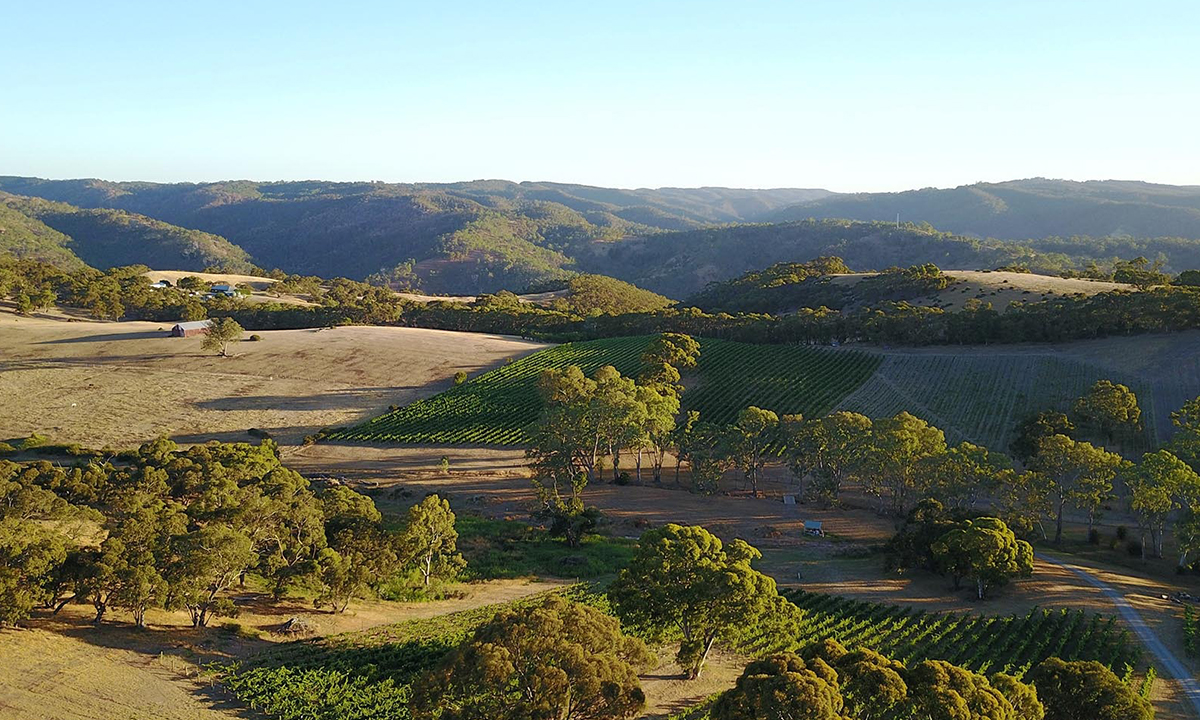
Paracombe
Council Adelaide Hills Council
Region Adelaide Hills
Key Agricultural Industries Livestock, meat and wool, grapes (wine and table) and crops for hay
Population 343
Town overview
The name is believed to originate from the Little Para River whose headwaters are in the area. It was settled in 1840–41 and was a sheep station until the beginning of the 20th century. It was subdivided and, with an influx of smaller landholders, a school, post office, church and recreation hall were built, but the town did not grow much beyond this. In 1966, work started on the Kangaroo Creek Reservoir, a dam of the River Torrens, and in 1969 it was completed at a cost of $5.3 million. Apart from supplying water to eastern Adelaide, it also serves a flood protection role and holds 19,160 megalitres.
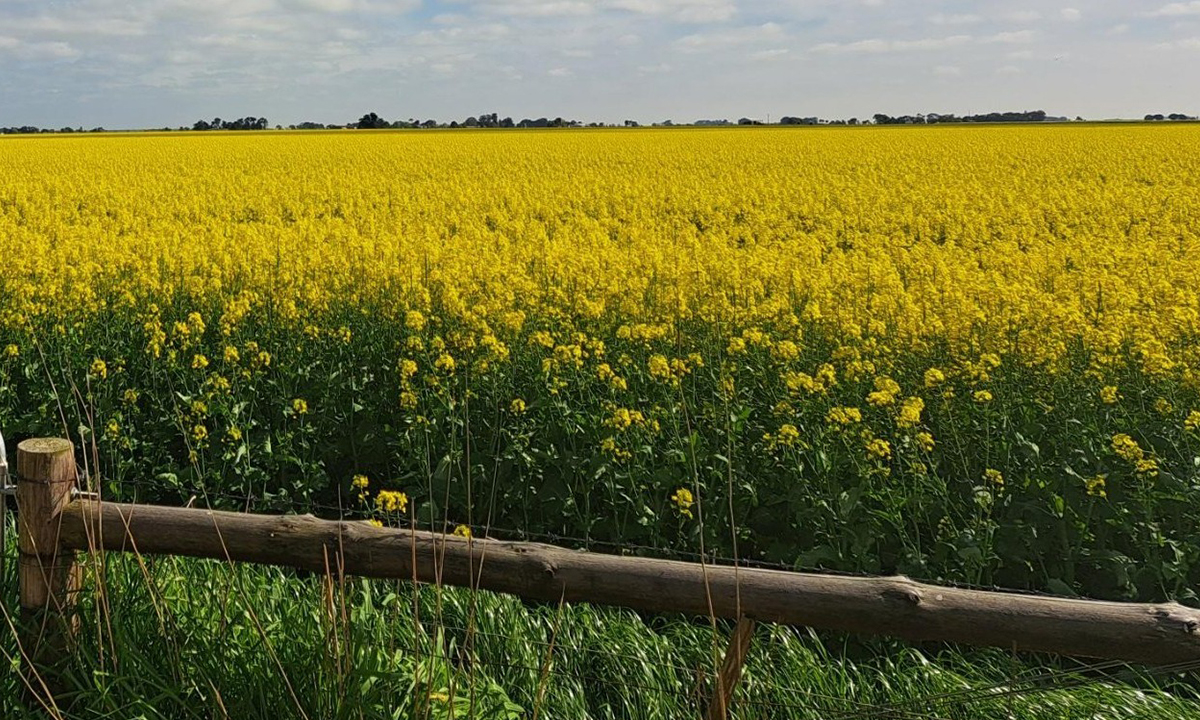
Penola
Council Wattle Range Council
Region Limestone Coast
Key Agricultural Industries Cereal crops, livestock, grapes (wine and table) and other broadacre crops
Population 1,312
Town overview
Penola is the major town in the Coonawarra, one of South Australia’s most productive wine growing areas. The town is also famous as a hugely important location in the life of Mary McKillop, Australia’s first saint.
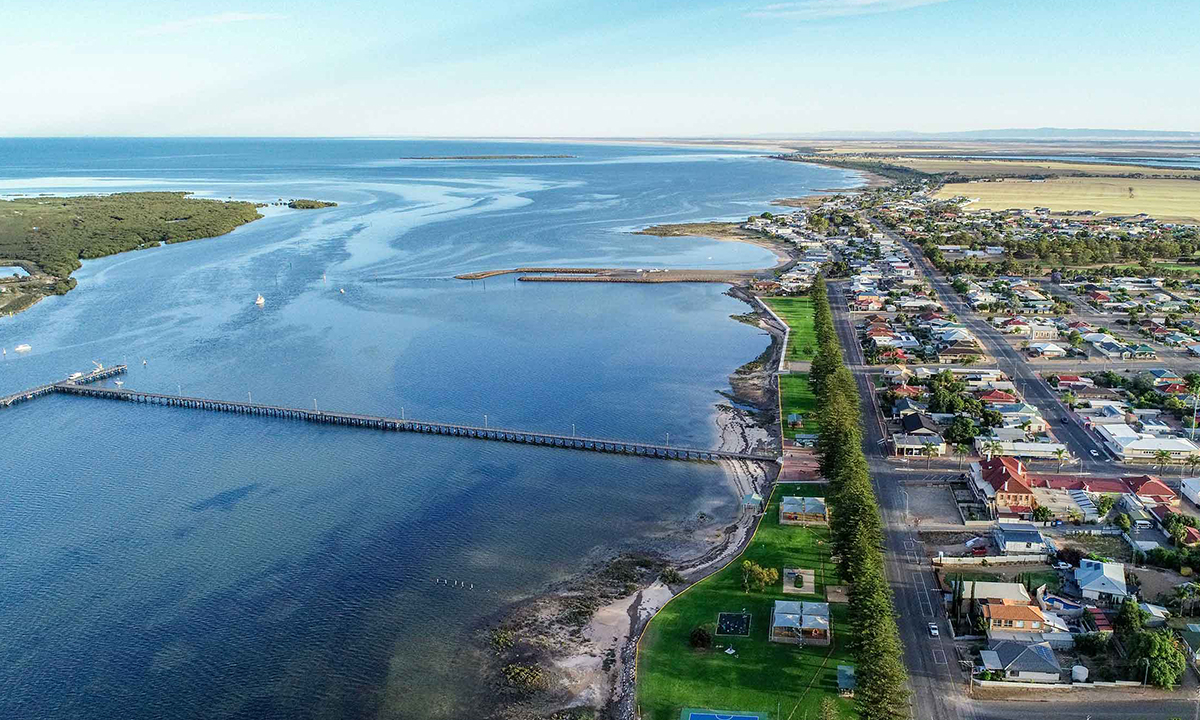
Port Broughton
Council District Council of Barunga West
Region Yorke and Mid North
Key Agricultural Industries Cereal crops, livestock, meat and wool, other broadacre crops
Population 1,034
Town overview
Port Broughton is home to a diverse fishery including Blue Swimmer Crab, King George Whiting, Tommy Ruffs, Yellowfin Whiting, Squid, Salmon, Flathead and Mullet. It is also a hub for primary industries and agricultural excellence. The town has embraced its agricultural heritage and harnessed its fertile lands to support a thriving farming sector. Livestock farming and cereal crops are key contributors to the local economy. The community takes pride in sustainable farming practices, employing environmentally friendly techniques to ensure the longevity of the land and its resources.

Port Lincoln
Council City of Port Lincoln
Region Eyre and Western
Key Agricultural Industries Livestock, meat and wool, cereal crops and seafood
Population 14,120
Town overview
With a growing grain industry and expanding fisheries, Port Lincoln is a rural leader. The livestock, meat, wool, and seafood produced by this locality, as well as it’s prime location on Eyre Peninsula, adds to its appeal.
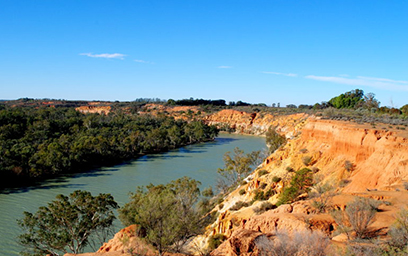
Renmark
Council Renmark Paringa Council
Region Murray and Mallee
Key Agricultural Industries Nuts, grapes (wine and table) and citrus fruit
Population 4,634
Town overview
Agriculture has diversified Renmark, leading to a growth in employment despite lockdowns and restrictions. The town has gained confidence in recent years and displays an attitude of optimism and forward thinking. The town’s outer regions are flourishing as well. These progressions in Renmark are manifested through the town’s recent makeover, especially its riverfront.
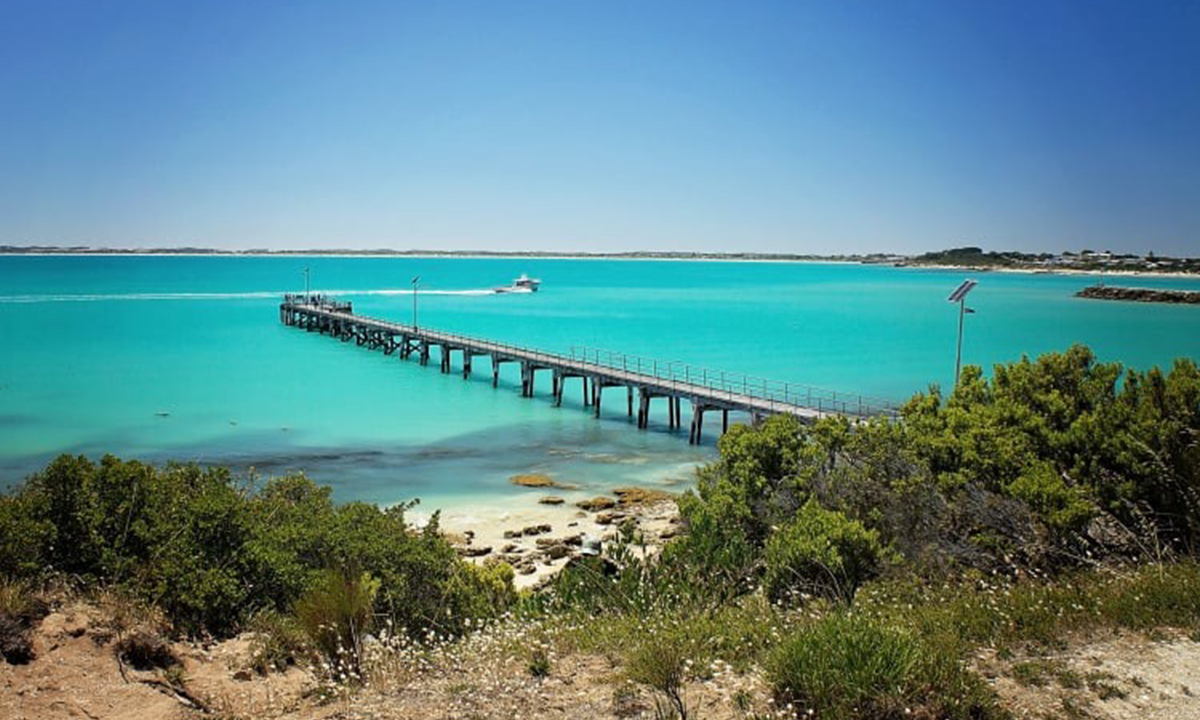
Robe
Council District Council of Robe
Region Limestone Coast
Key Agricultural Industries Livestock, meat and wool, seafood, crops for hay
Population 998
Town overview
Robe is a town and fishing port located in the Limestone Coast of South Australia. The town’s distinctive combination of historical buildings, ocean, fishing fleets, lakes and dense bush is widely appreciated.
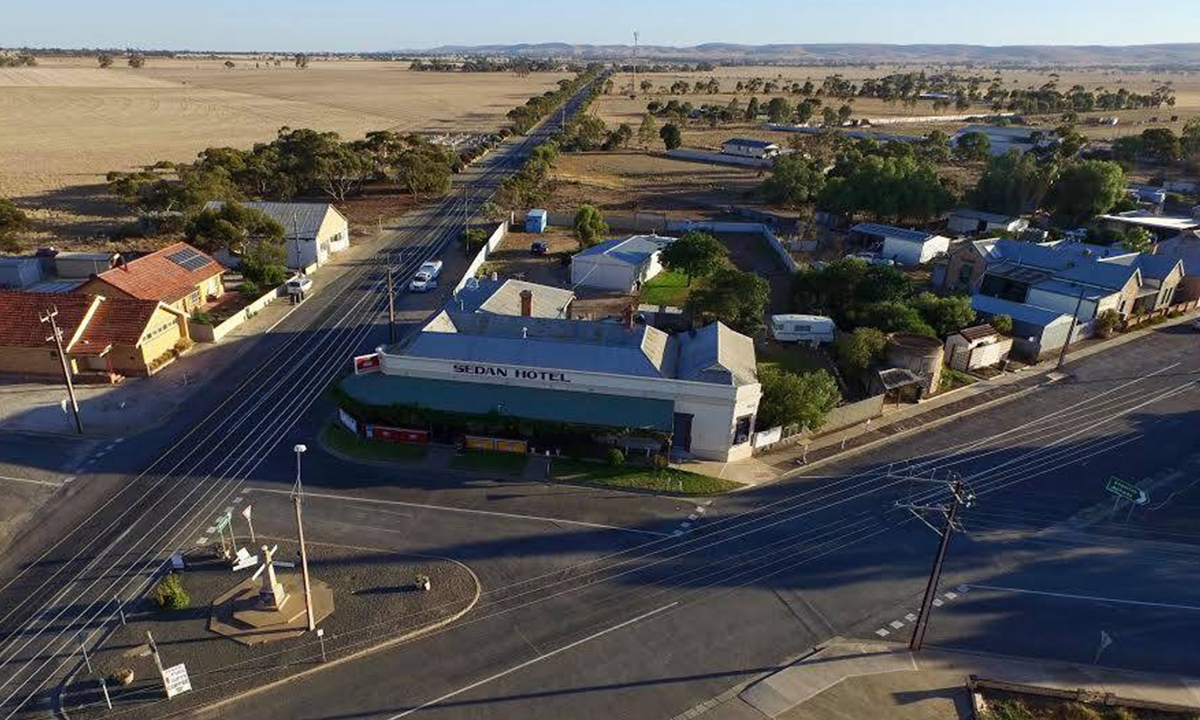
Sedan
Council Mid Murray Council
Region Barossa, Light and Lower North
Key Agricultural Industries
Population 211
Town overview
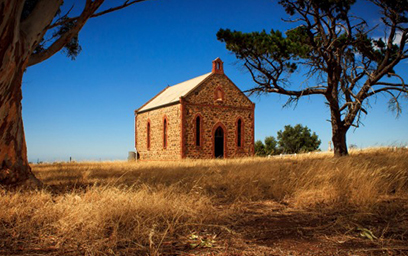
Strathalbyn
Council Alexandrina Council
Region Fleurieu and Kangaroo Island
Key Agricultural Industries Grapes (wine and table), livestock, meat and wool and vegetables
Population 6,504
Town overview
Strathalbyn functions as a service and social centre for the Fleurieu region. Rural manufacturing and equipment sales are essential to the town, as well as wine and table grapes, livestock, meat, wool, wine, and vegetables.
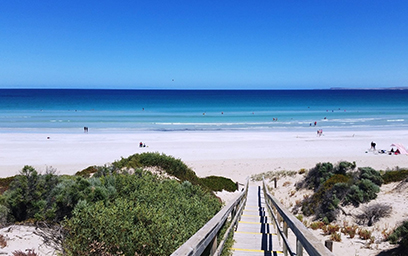
Streaky Bay
Council District Council of Streaky Bay
Region Eyre and Western
Key Agricultural Industries Cereal crops, livestock, meat and wool, and crops for hay
Population 1,378
Town overview
The Eyre Penisula town of Streaky Bay is proud of its progressive council. Founded in 1872, the town is a centre for fishing and tourism.
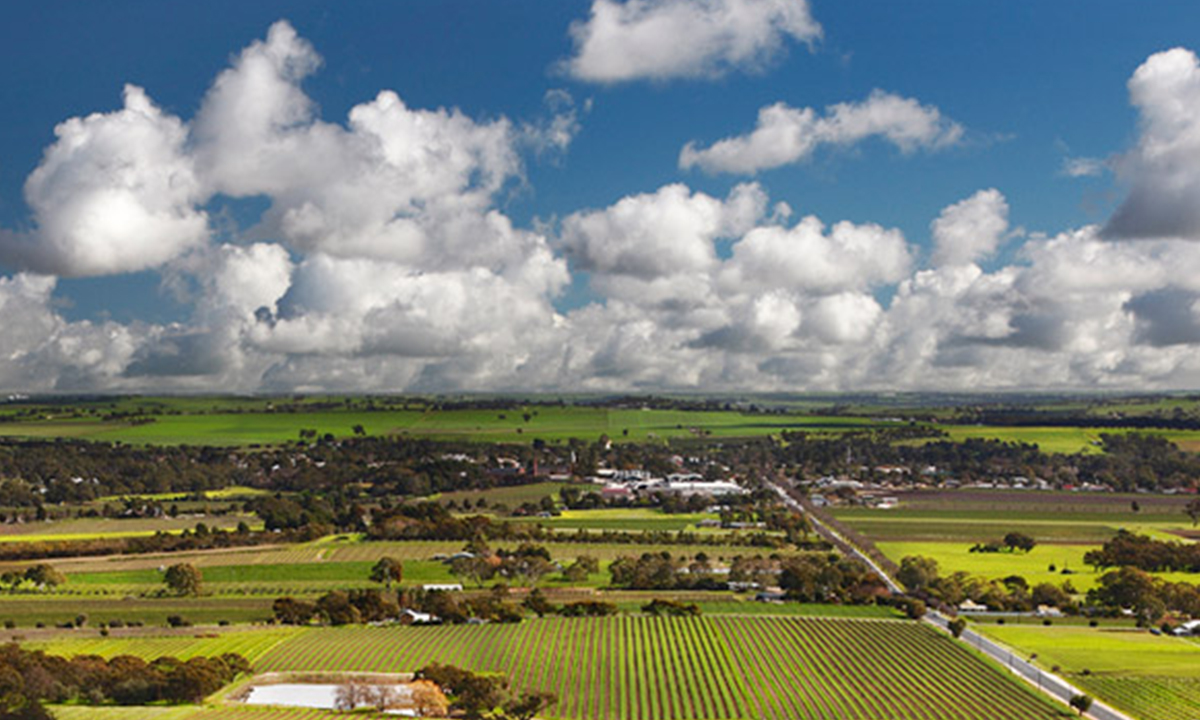
Tanunda
Council Barossa Council
Region Barossa, Light and Lower North
Key Agricultural Industries Grapes (wine and table), livestock, meat and wool and cereal crops
Population 4,588
Town overview
Tanunda, in the heart of the Barossa, is the jumping off point to explore the famous wine region. The town services the surrounding vineyards and is an important tourism destination.
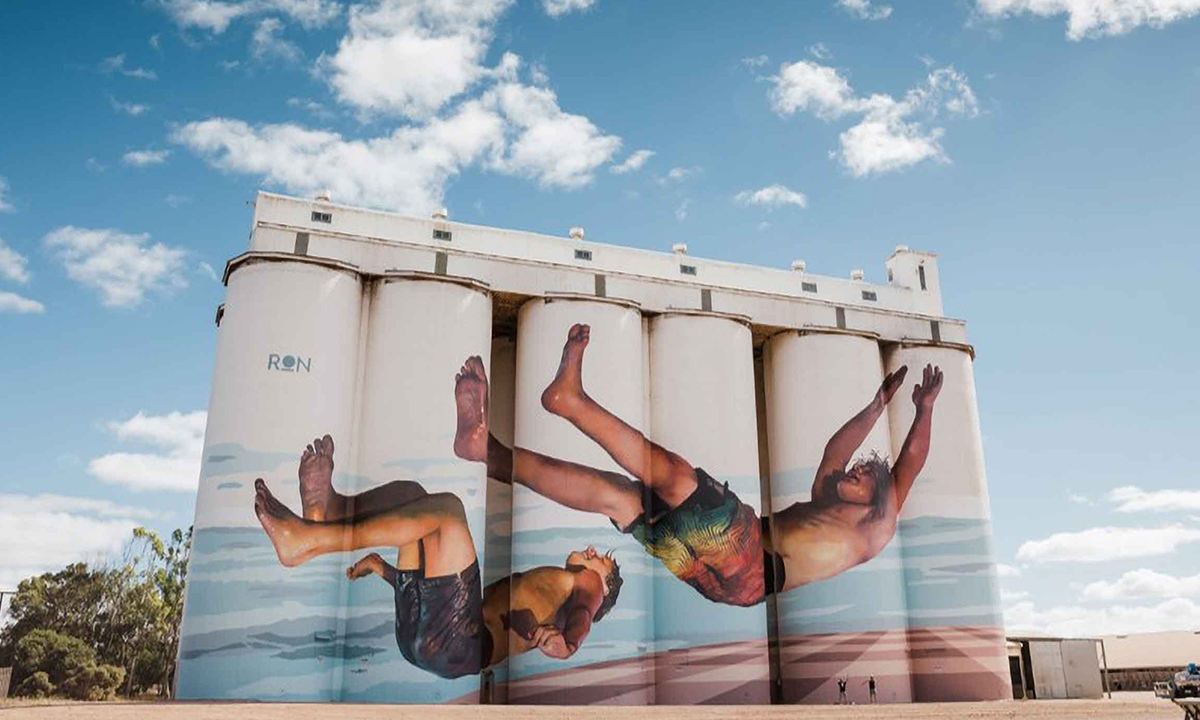
Tumby Bay
Council District Council of Tumby Bay
Region Eyre and Western
Key Agricultural Industries
Population 1,631
Town overview
Tumby Bay District Council is a local government area of South Australia covering an area of the North Eastern Eyre Peninsula. It was established in 1906, only six years after the town of Tumby Bay was established, when the district was severed from the former District Council of Lincoln (now the District Council of Lower Eyre Peninsula) to form the present council.
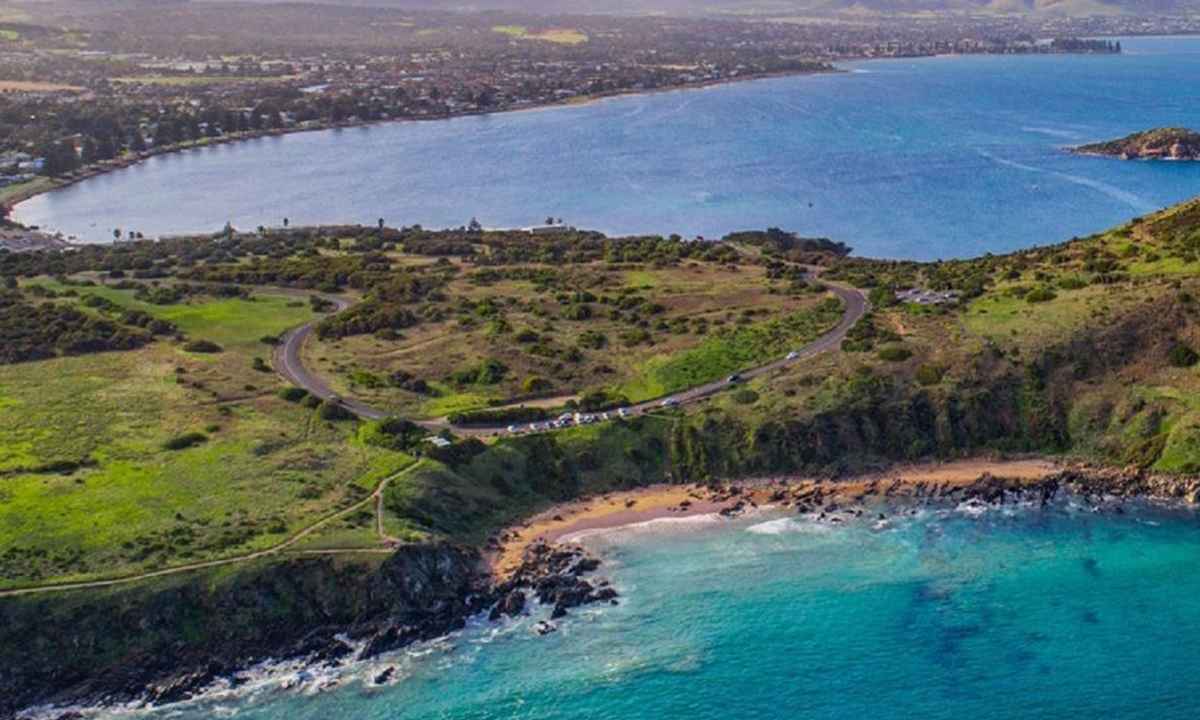
Victor Harbor
Council Victor Harbor City Council
Region Fleurieu and Kangaroo Island
Key Agricultural Industries Livestock, meat and wool, dairy and crops for hay
Population 15,265
Town overview
The town of Victor Harbor has a focus on issues such as long term water security, accessibility to a regional abattoir supporting service works and improved engagement with government agencies led by the Agribusiness Working Group.
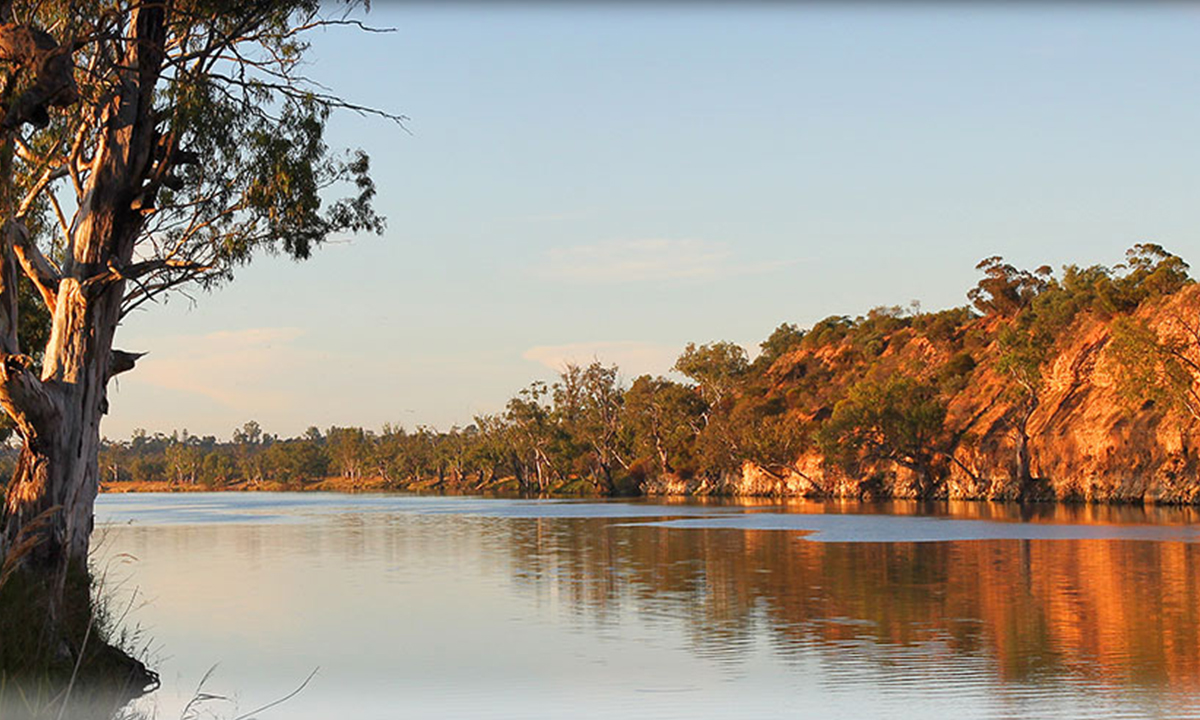
Waikerie
Council District Council of Loxton Waikerie
Region Murray and Mallee
Key Agricultural Industries Citrus fruit, grapes (wine and table) and crops for hay
Population 2,684
Town overview
Waikerie is located 170km NE of Adelaide and is known as the Gateway to the Riverland. The lush green orchards and vineyards interspersed with dry land farming is a fantastic sight as you travel the highway.The Waikerie district consists of agricultural, horticultural and viticultural developments and has a large number of commodity processing plants.
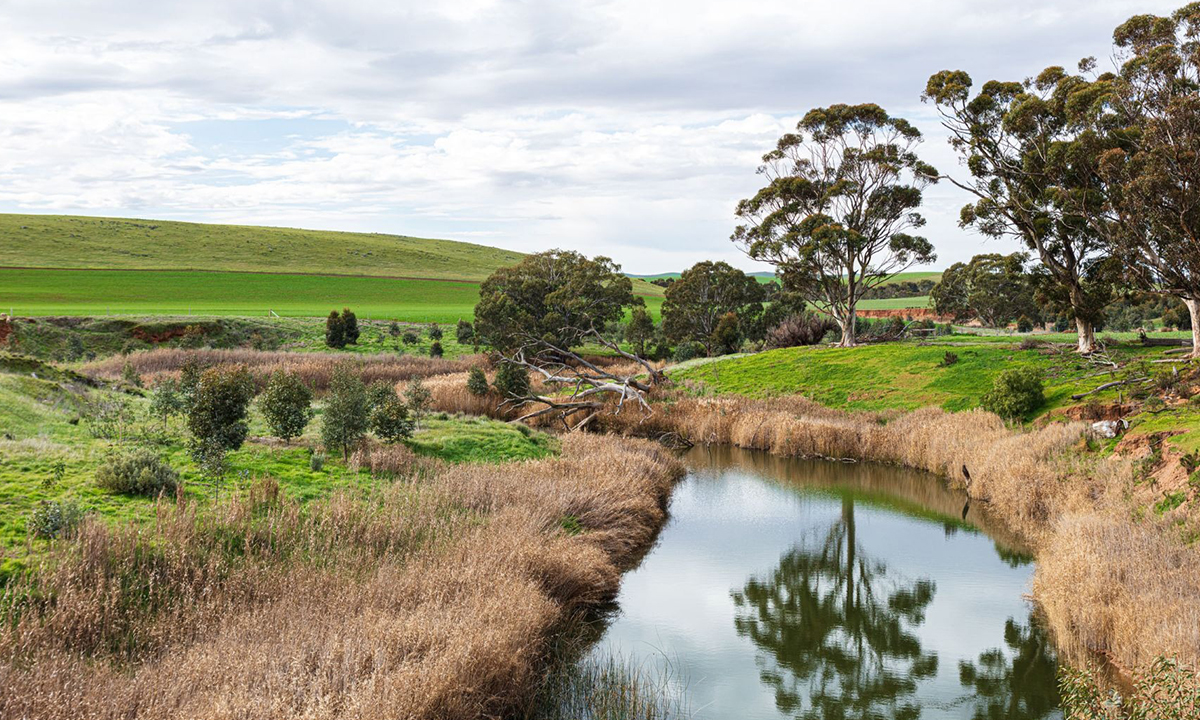
Wasleys
Council Light Regional Council
Region Barossa, Light and Lower North
Key Agricultural Industries Livestock, meat and wool, cereal crops, grapes (wine and table)
Population 328
Town overview
Wasleys has become a thriving centre and once operated three chaff mills. Though the chaff mills have ceased operations, the town is still a focal point for agriculture and farming livestock.
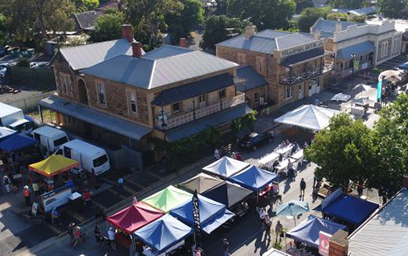
Willunga
Council City of Onkaparinga
Region Fleurieu and Kangaroo Island
Key Agricultural Industries Grapes (wine and table), vegetables and livestock, meat and wool
Population 2,308
Town overview
Made world-famous by the Tour Down Under, for the rest of the year the town supports the surrounding wine and fruit growing region. The thriving local market has become a SA staple, selling organic produce. A town that supports wellbeing, tourism and the arts.
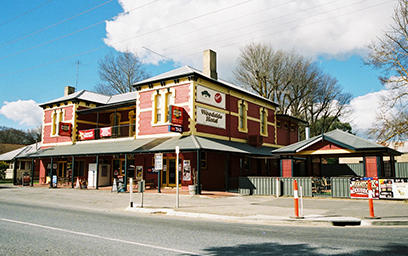
Woodside
Council Adelaide Hills Council
Region Adelaide Hills
Key Agricultural Industries Grapes (wine and table), fruit – apples, pears and cherries, livestock, meat and wool
Population 2,608
Town overview
Woodside, in the Adelaide Hills, harbours stunning views and a welcoming culture. Local wineries highlight both the access to nature and agriculture Woodside has to offer. This little community, known for its wine and table grapes, fruit and livestock, deserves to be celebrated.
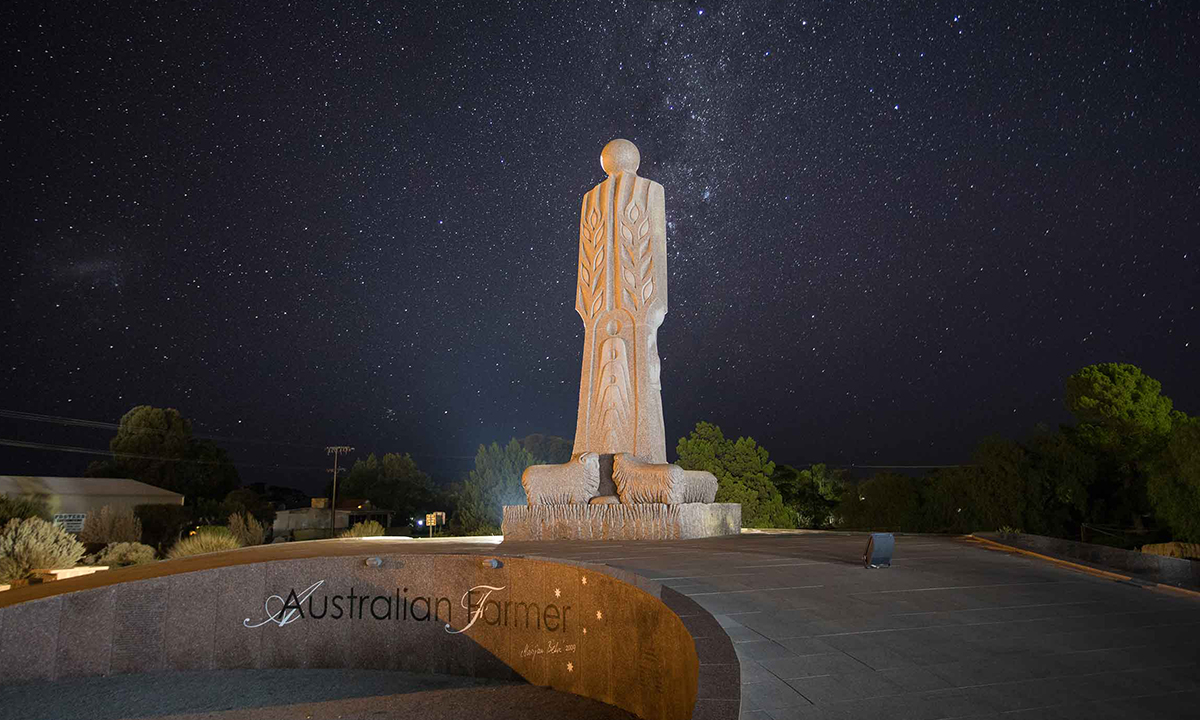
Wudinna
Council Wudinna District Council
Region Eyre and Western
Key Agricultural Industries Cereal crops, other broadacre crops, livestock, meat and wool
Population 548
Town overview
Wudinna is known for being innovative and forward-thinking with agriculture practices. The community of Wudinna has been highly involved in mental health programs to improve wellbeing in the region.
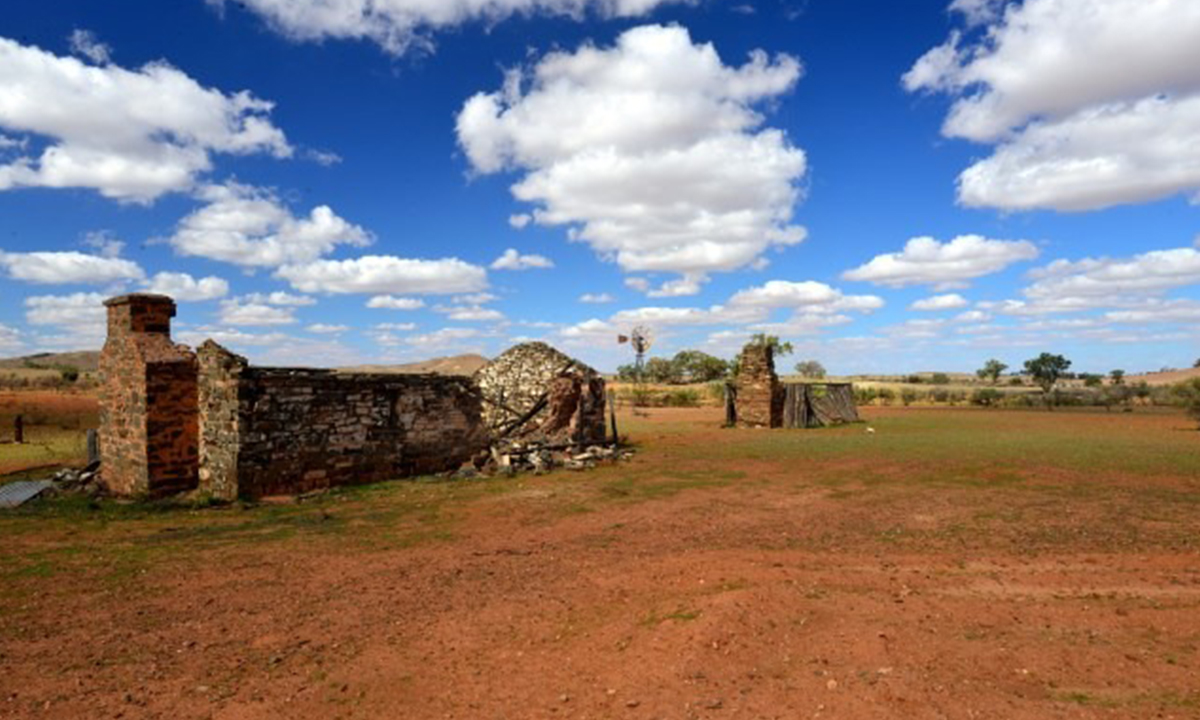
Yunta
Council Outback Communities Authority
Region Yorke and Mid North
Key Agricultural Industries Livestock, meat and wool
Population 85
Town overview
The progressive and cohesive community of Yunta has rallied together to improve wellbeing after years of drought, with volunteers building new facilities and hubs for events such as the North-East wool show attracting visitors.
Why Vote?
Entering the awards will provide regional communities the opportunity to reflect on their contributions to South Australia’s primary industries and regional development and increase awareness of their town and agricultural contribution.
In addition to being recognised as the South Australian Agricultural Town of the Year, the winning town will receive:
- Sign for the town entrance recognising their achievement
- Certificate and trophy presented by the Minister for Primary Industries and Regional Development
- Community event and sign unveiling to celebrate the the 2023 Agricultural Town of the Year
- Double page feature in February edition of SALIFE magazine.
Terms and conditions
- Submitting a vote is deemed acceptance of these terms and conditions, and the award criteria listed on the website. Information on how to vote forms part of the terms and conditions of entry.
- The promoter is Solstice Media (ABN 63 105 598 187) of Ground Floor, 165 Grenfell Street Adelaide SA 5000 (Promoter).
- Voting closes at 5.00pm on Wednesday 28 June 2023.
- Voters are required to provide their full name, email, phone number and postcode.
- Entrants may be required to provide their residential or mailing address, if requested, to provide to gaming authorities.
- Each individual person is allowed a maximum of one vote. Any duplicate votes and entries will be removed.
- Employees of Solstice Media, the Department of Primary Industries and Regions and members of their family residing at the same address are not eligible to enter.
- Entrants must be above the age of 18 years old to accept the prize.
- Entrants must be a South Australian resident.
- A person who submits a vote is considered to be a “voter”.
- Any regional town in South Australia can be nominated and enter the South Australian Agricultural Town of the Year award. ‘Regional’ is defined by those towns that are located within Areas 1-6 on the PIRSA Regions Map here, and the McLaren Vale Preservation District, Virginia and Gawler.
- For the purpose of this award, ‘agriculture’ refers to all primary industries – agriculture (field crops, horticulture, meat and livestock, dairy, grape and wine, forestry), and fisheries and aquaculture.
- A town’s involvement in agriculture is not limited to farmers, but includes the wider community that supports the industry – e.g. shops, service providers, community activities.
- Should a voter’s contact details change during the Voting Period it is the voter’s responsibility to notify the Promoter.
- A request to access or modify any information provided in an entry should be directed to the promoter.
- If the district council of a nominated town does not wish for their town to be considered as a finalist or to have a nomination progress through the entry stage of the program, the District Council can advise the judging panel and the nomination will be removed from the process. In this instance the town with the next highest votes will be selected and made a finalist.
- The Promoter is not responsible for any lost, late, incorrectly entered or misdirected entries. The Promoter reserves the right to verify the validity of entries and to disqualify any nominator or voter who tampers with the nomination process or who submits a nomination or entry that is not in accordance with these terms and conditions.
- The Promoter is not responsible for any problems or technical malfunction of any telephone network or lines, computer online systems, servers or providers, computer equipment, software, failure of any e-mail, nomination, and entry to be received by the Promoter on account of technical problems or traffic congestion on the Internet or at any website, or any combination thereof.
- The Promoter and its related bodies corporate and their respective officers, employees and agents will not be liable for any loss, damage or personal injury whatever (including but not limited to direct, indirect and consequential loss) suffered or sustained in connection with this promotion, the promotion of this promotion or the use of any prizes, except for liability which cannot be excluded by law.
- If for any reason the promotion is not capable of running as planned (including but not limited to) infection by computer virus, bugs, tampering, unauthorised intervention, fraud, technical failures or any other causes beyond the control of the Promoter which corrupt or affect the administration, security, fairness, integrity or proper conduct of this promotion, the Promoter reserves the right (subject to any written directions given under applicable law) to qualify any individual who tampers with the entry process and to cancel, terminate, modify or suspend the promotion.
- Entry and voting details remain the property of the Promoter and may be passed on to the supplier of the prize(s). The name and a photograph of the winners may be used for promotional purposes by the Promoter, unless the winner otherwise notifies the Promoter at the time of accepting the prize. The Promoter will provide the name and address of the winner to State and Territory gaming authorities as required by law. Eligible Entrants consent to the Promoter using personal information provided in connection with this promotion for the purposes of facilitating the conduct of the promotion and awarding of prizes.
- A failure by the Promoter to enforce any one of these items and conditions in any instance(s) will not give rise to any claim or right of action by any other person or contestant.
- The entrant/voter agrees if they are not already a subscriber to InDaily, they will be subscribed to InDaily as part of the entry process, unless advised otherwise.
- The voter agrees if they are not already a subscriber to PIRSA’s database, they will be subscribed to PIRSA News as part of the nomination process, unless advised otherwise.
Keep up to date with the latest regional news and event updates by subscribing to InDaily’s Regional News below.


